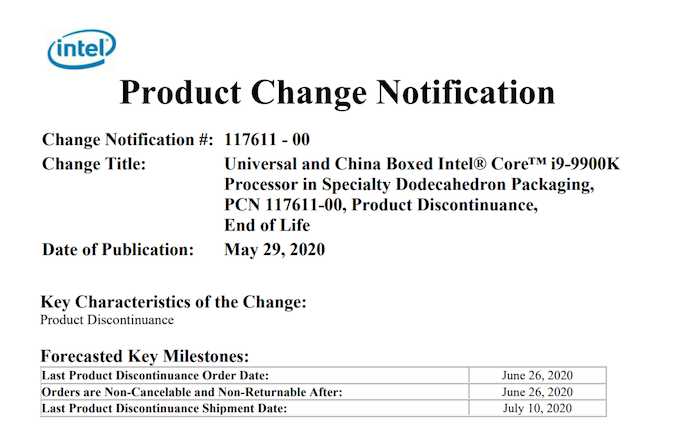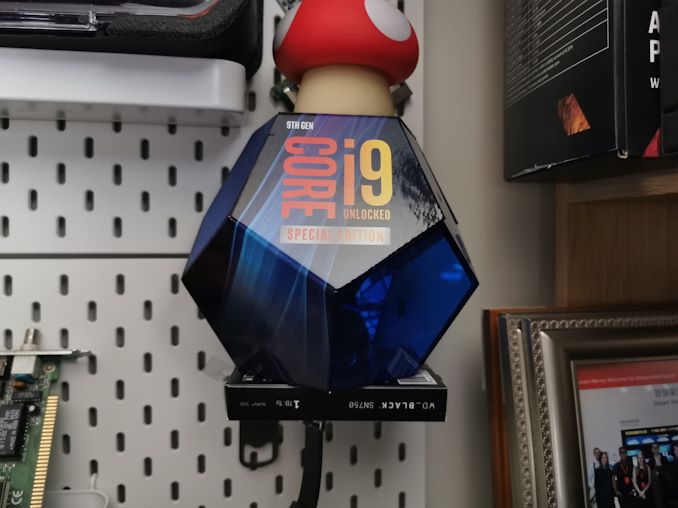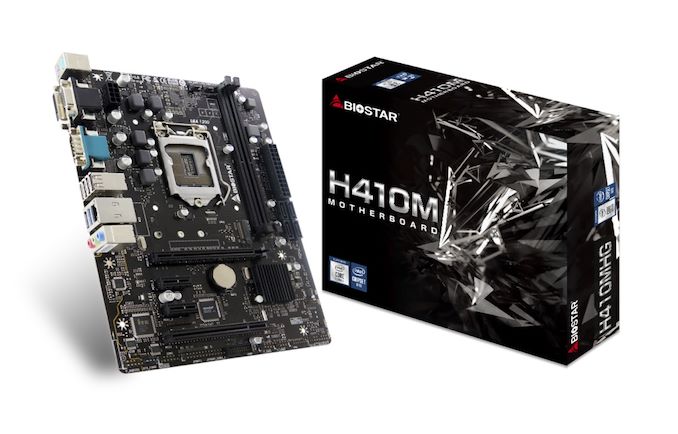Sunday 31 May 2020
Gigabyte B550 Aorus Master Preview
The 3rd Gen Ryzen CPUs have proven a huge success, and if you want to get on board the train without blowing your budget on a X570 motherboard, how about a B550?
from Overclock3D.Net https://ift.tt/3gHiYYE
via IFTTT
Gigabyte B550 Aorus Pro Preview
With PCI Express 4.0 and support for Ryzen 3 CPUs the B550 chipset might be the killer product we've been waiting for.
from Overclock3D.Net https://ift.tt/3gFrKqg
via IFTTT
Intel Xe DG1 graphics card 3DMark leak again suggests AMD and Nvidia won’t be troubled
Intel’s Xe DG1 graphics card has been spotted in a 3DMark benchmark, or at least the rumor mill believes that result is for Intel’s first crack at a discrete GPU.
As ever, we shouldn’t read too much into this given that it is just speculation that this is DG1, although the source is a reliable one, the ever-present TUM_APISAK. But even if the leak is on the money, remember that this is an early sample GPU, and won’t reflect the exact performance Intel may achieve with the final product.
At any rate, the purported DG1 graphics cards scored 5,538 in 3DMark’s Fire Strike test (paired with an Intel Core i9-9900K processor) and hit a graphics score of 5,960.
That’s not a massively impressive result, but as we’ve already mentioned, it must be treated with caution. It’s in the ballpark of a graphics card as old as the GeForce GTX 750 Ti, albeit a bit faster than that veteran GPU (which scored 5,402 for graphics in a 3DMark result highlighted on Twitter).
- Intel Tiger Lake release date, specs and news
- We'll show you how to build a PC
- Check out all the best processors
As Wccftech, which spotted this, observes, it’s a fair way behind the GTX 1050 to pick out another example from Nvidia’s line-up – that previous-gen budget card is around 500 points to 800 points better than the DG1 depending on which 3DMark result you look at.
No cause for concern?
Anyhow, you get the idea – and as with a previous Geekbench result, which showed that the DG1 wasn’t much better than Nvidia’s low-end MX250, the overall vibe thus far is that Intel’s initial product is not going to be causing either AMD or Nvidia any sleepless nights.
That said, at least this new 3DMark leak shows the Intel GPU comfortably outdoing the likes of the MX350, by around a third in terms of that graphics score in fact.
Further remember that Intel’s first GPU is likely to be a testing the waters affair, and as we’ve previously heard via the rumor mill, it’s going to be a mobile part – in other words, a graphics card for laptops, not a GPU for a desktop PC. With further development, perhaps it could start to worry Intel’s rivals at least in the notebook arena – particularly when combined with the potential of Xe integrated graphics with Intel’s Tiger Lake mobile processors.
- These are the best graphics cards of 2020
from TechRadar: computing components news https://ift.tt/3gKKxRd
via IFTTT
Saturday 30 May 2020
Samsung aims to kill server CPUs with this special new SSD
At this week's OCP Global Summit, Samsung disclosed more information about a new type of solid state drive (SSD) it's working on - one that only makes sense in a data center context, for now.
When it comes to flash memory, the most common configuration in data centers worldwide is JBOF (or just a bunch of flash), which uses NVMe SSD storage attached to PCIe switches, processors and NICs (network interface cards). There are two rather significant issues with this system, to do with the lack of scalability of the storage controller and limited bandwidth; a classic case of too many middlemen.
EBOF - or Ethernet SSD Bunch of Flash, as Samsung puts it - aims to solve this issue by putting the Ethernet ports (two of them for redundancy) on the SSDs themselves.
- Check out our list of the best portable SSDs available
- Here's our list of the best external hard disk drives of 2020
- We've built a list of the best rugged storage out there
These are not your usual Ethernet ports, however, as each supports a staggering 25Gbps - about 25x what most Gigabit interfaces can achieve. Unsurprisingly, that's only available in a standard SSD (i.e. 2.5-inch), rather than the smaller M2 form factors.
Samsung claims the E-SSD drive will achieve PCIe Gen4x4 performance, or about 1500K IOPS at 4K random read. What’s even more spectacular, though, is that the performance of the drive scales in an almost linear fashion.
Based on the chart provided by the company, 24 NVMe drives will be about 7.5x faster than a single NVMe drive, whereas the same number of NVMe-oF SSDs will be about 23x faster than a single drive.
Removing the CPU, networking and other bottlenecks means lower latency, higher bandwidth, lower cost, better performance and potentially big TCO savings. Great news for data center operators, but not so great for everyone else in hardware procurement.
- Here's our list of the best NAS drives and enclosures on the market
from TechRadar: computing components news https://ift.tt/2Md4aTA
via IFTTT
Intel to Discontinue Core i9-9900K Special Dodecahedron Packaging
One of the interesting elements of this profession is dealing with how the processor companies have changed their attitudes towards marketing their products over the past couple of decades. After years of bland boxing and sub-standard coolers, there have been recent efforts to produce something eye-catching to users casually browsing shelves, especially in an effort to draw attention to the high-end products. While ultimately the packaging has little-to-no value after unboxing the product, beyond perhaps the background in a gaming stream, it does mark a change in attitudes, especially when product packaging can accelerate the hype around a product.
One of the recent product packaging efforts from Intel was the dodecahedral packaging for its halo desktop product, the Core i9-9900K. While AMD has focused special packaging for high-end desktop, Intel it seems prefers to point it into the desktop product line. This packaging is a transparent blue dodecahedron, with the CPU at the center. No cooler is bundled, and the packaging is large for the processor, but it certainly made it stand out.
Intel launched Comet Lake a couple of weeks ago, its 10th generation Core product, with the flagship i9-10900K sitting at the top of the stack. As the Core i9-9900K no longer sits in that top spot, Intel has decided to discontinue versions of the 9900K in its special packaging. Specifically, retailers have until June 26th to order these processor versions, and the last shipment will be on July 10th. This is a very quick discontinuance procedure, however the non-special retail version will still be available.
At some point in this market, we are going to get a product with iconic packaging. One could argue if the packaging makes the product interesting at all – given how users tend to focus on a specific processor for their build, is spending potentially slightly more for the fancy box ever justified? You may think that this news post is somewhat arbitrary, talking about packaging discontinuance, but it perhaps yields a bigger question in the processor market – does packaging matter? Or the contents – a message from the CEO on a special anniversary edition, or the signature on the heatspreader?
Related Reading
- The Intel Core i9-9900KS Review: The 5 GHz Consumer Special
- AMD Ryzen Threadripper 1950X and 1920X: We’re Allowed To Show Pictures Now
- The AMD Threadripper 2 Teaser: Pre-Orders Start Today, Up to 32 Cores
- Arm Development For The Office: Unboxing an Ampere eMag Workstation
- Huawei Mate 9 Porsche Design Unboxing and Hands On Benchmarks
from AnandTech https://ift.tt/2XJcPCD
via IFTTT
Friday 29 May 2020
Best VPS hosting providers of 2020
Standard shared web hosting packages are cheap and user-friendly, but they're also slow, inflexible, and don't have the power or functionality that professional and business users often need.
If you need more than a basic host but can't afford a dedicated server or don't want to deal with the complexity of these beasts, VPS (Virtual Private Server) hosting could be a smart choice.
Buying a VPS plan means that you get your very own virtual server environment. You have full control over the operating system, the extensions and apps you install, and all their settings. Each physical server will still host multiple VPS customers, but not as many as with shared hosting, and typically each VPS will be allocated a share of key resources – RAM, storage space, CPU cores – for their use alone.
This can be easier to manage than you might think. Many VPS plans include standard tools like cPanel to help monitor and configure your site. Some hosts will manage the service for you, monitoring for problems like a crashed service, and fixing them as soon as they're detected.
VPS prices and specs vary from a few dollars a month to hundreds, depending on your requirements. There's a lot of choice out there, but don't panic – our list of five best VPS providers will point you in the right direction.
- Our list of the best web hosting solutions is also worth a read


Founded in 2004, Hostinger has been providing a quality hosting service for some time now and their VPS hosting is no different.
You have plenty of choices here from the low-tier plan that has 1 CPU, 1 GB RAM, 20 GB of storage and 1000 GB bandwidth to high-tier plan where you get 8 CPU, 8 GB RAM, 160 GB of storage and 8000 GB bandwidth.
Pricing is affordable too, especially if you commit to longer terms. The 1 CPU plan starts at $3.95 per month (if you choose the 4-year billing) and renews at $8.16 per month, while the 8 CPU plan starts at $29.95 per month (if you choose the 4-year billing) and renews at $65.56 per month.
All plans have IPv6 support, a dedicated IP, 100 Mb/s Network and a few more additions. Linux users also have plenty of choices. Apart from the usual CentOS, Ubuntu, Fedora and Debian, you can also choose Suse. Windows VPS hosting is available as well, with the plans being more pricier but also more powerful.
If you encounter any problems, there’s a 24/7 live chat service to help you. Hostinger delivers a capable VPS hosting with a very tempting first term price, and with all plans being fully refundable, everyone can try out the service.

Bluehost has been around for quite some time and always offered powerful plans for a variety of users, and their VPS range is no different.
You have three plans to choose from, with the cheapest plan starting at $17.99 per month for the first term and $29.99 per month on renewal. That gets you 2 CPU cores (2x Xeon Gold 5220), 30GB SSD storage, 2 GB RAM, 1 TB bandwidth and one IP address. The top-tier plan called Ultimate, gives you 4 CPU cores (2x Xeon Gold 5222), 120GB SSD storage, 8 GB RAM, 3 TB bandwidth and two IP addresses, and it’s priced at $57.99 per month for the first term and $119.99 per month on renewal.
All plans come with a free SSL certificate and a 1-year domain. You also get unlimited subdomains and email accounts, and cPanel is included too. Domain privacy and protection, and SiteLock are categorized as optional add-ons, so you’ll have to pay extra if you need them.
Support is available 24/7 so if you encounter any difficulties you’ll be able to call them at any time of the day. All in all, Bluehost is a capable provider for both newbies and experienced users so they are definitely worth a try.

Check out a few VPS hosting providers and it's easy to be tempted with low headline rates, but don't be fooled – companies use a range of tricks to keep their charges down.
The hardware specs of a starter product are often kept unrealistically low, for instance, to keep the price right down. Important items – backups, cPanel – may be expensive extras. And even then, the headline rate may only apply if you pay for two or three years upfront, increasing dramatically on renewal.
InMotion Hosting is refreshingly different. Its baseline VPS-1000HA-S plan doesn't have the most eye-catching price at $24.99 per month over two years, but it's easy to see why the company asks this much. The product has a better specification – 4GB RAM, 75GB storage, 4TB bandwidth, 3 dedicated IPs – than some high-end plans from other providers, backups and a cPanel licence are included for free, and there's a 90-day money-back guarantee.
There's an unusual feature in what InMotion calls "unlocked CPU cores". Rather than having access to one or two cores only, you're able to spread your processing load across all cores on the server, a major performance boost for tasks involving a lot of simultaneous processing.
Welcome bonus touches include a feature called Launch Assist, which essentially means you get two hours of free time with one of InMotion's server administrators. Whether you need to change domain settings, configure cPanel, migrate WordPress or database files, they can help you get the job done.
Put it all together and you're getting a very capable set of VPS hosting plans. If you'd prefer a package that comes with unexpected surprises, rather than hidden catches, we'd give InMotion a try.

Some VPS hosts focus on first-time users, others go for big business, but Hostwinds does its best to appeal to everyone with no less than 10 different VPS hosting plans.
The low-end Tier One plan looks a little underpowered to us, with just 1GB RAM, one CPU core, 30GB of disk space and 1TB traffic. But it's cheap at $4.49 per month, and you can extend it significantly without spending a huge amount (adding basic server monitoring and cloud backups costs an extra $6 a month for both).
The more realistic Tier Four includes 6GB RAM, 100GB drive space, two CPU cores and 2TB of traffic. It's also significantly more expensive at $26.09 a month, but still competitive with other providers.
Meanwhile the top-of-the-range Tier Ten product gets you 96GB RAM, 16 CPU cores, 750GB storage and 9TB of traffic for an initial $296.09 a month. You probably don't need anything like that, but this does show there's plenty of scope for upgrading your site over time.
Every plan has some appealing configuration options. In particular, along with support for the usual Linux variants – CentOS, Ubuntu, Fedora, Debian – you can choose Windows Server 2008, 2012 or 2016 for only a $5 a month premium. That's very good value, and if you're more familiar with Windows than Linux, it could save you from lots of management hassles later on.

Liquid Web is a premium web hosting provider which has been offering top quality managed solutions for more than 20 years, and now handles 500,000 sites for more than 32,000 customers worldwide.
The company doesn't try to beat the competition on price, instead focusing on delivering comprehensive products which will deliver quality results.
The cheapest Liquid Web plan may cost $59 a month (you can reduce that to $39 a month by going annual), for instance, but that gets you 2GB RAM, 40GB storage, a very generous 10TB of bandwidth, and 100GB backup.
There are lots of configuration options. Instead of just telling you that you're getting CentOS 7, Liquid Web allows you to select CentOS 6, Debian 8, Ubuntu 14.04 or 16.04, and often with multiple options of their own: cPanel, Plesk, CloudLinux and more.
This is a managed product, too. Liquid Web fully supports the base operating system, and the support team will proactively restore failed services as soon as they're detected. Getting a managed VPS with other providers could cost you an extra $30 a month, or more.
If your VPS still has issues, there's speedy 24x7x365 support from knowledgeable professionals who will do their best to solve your problems at speed.
Liquid Web may not have the most appealing headline prices, but it's still cheaper than many others considering the features you get, and the excellent support will help keep your site running smoothly down the line.
- We consider the merits of shared hosting vs VPS hosting here
You might also want to check out our other website hosting buying guides:
- WordPress
- Cloud hosting
- E-commerce
- Dedicated server
- Small business
- Windows
- Managed
- Green
- Business
- Colocation
- Email hosting
- Resellers
- Shared
- Cheap
- Website builders
- Best website hosting
from TechRadar: computing components news https://ift.tt/2UC34UI
via IFTTT
Xbox Series X release date, specs, design and launch titles for the new Xbox
Xbox Series X is the new Xbox that is due for release in late 2020. So far we know when the next-gen Xbox will release, its official name, some of the games we'll be playing, as well as information on backwards compatibility, and how cross-gen game ownership will work under the new Smart Delivery feature.
We also know that it will have a slightly redesigned controller that should be more accessible, and offer 1TB SSD upgrades from Seagate.
From what we've seen so far, it looks like the Xbox Series X will sport a blockier style that's similar to that of a small gaming PC. More importantly, we now know what's inside the console, thanks to Microsoft giving us the Series X's full specs, and we can say for sure that the new Xbox is going to be an absolute powerhouse.
But the Xbox Series X won't be the only next-generation hardware on offer from Microsoft. The company has confirmed that the next-generation family of consoles will be called 'Xbox' and that 'Series X' is just one of the consoles within that family, which is likely to include a cheaper disc-drive free version as well.
So what exactly has Microsoft got to offer with the new Xbox? And how will it compare to the PS5? Let's break down everything we know about the Xbox Series X.
[Update: Xbox Series X backwards compatibility explained by Microsoft. Read on to find out more.]
- What is it? Xbox Series X will be the next-gen Xbox console.
- Xbox Series X release date: "Holiday 2020" - so between October and December.
- What can I play on it? Halo Infinite and Hellblade 2 for starters, while all previous generations of Xbox console games will be covered by backwards compatibility.
- What will the Xbox Series X cost? No prices yet, and we're not expecting it to be cheap. But Microsoft has said it won't be making the same pricing mistakes as last generation so perhaps we'll be pleasantly surprised.
- Will Xbox Series X have VR? Microsoft has confirmed Xbox Series X won't have VR at launch, with Xbox boss Phil Spencer saying the company is waiting until Xbox VR is a "no-brainer".
- Will coronavirus delay the Xbox Series X release? It doesn't look like this will be the case as Microsoft is citing the same release window.

Microsoft has given the release window of "Holiday 2020" - which means we'll likely see the Xbox Series X release between October and December this year. We're expecting a November release date as, historically, that's when Microsoft has released its consoles.
It's possible that the release date will be November 26, 2020 (AKA Thanksgiving in the US). An image stating the Xbox Series X is "coming Thanksgiving 2020" (shown above) appeared on a number of product pages around the world briefly before being reverted back to to the previously announced Holiday 2020 release window.
A Microsoft spokesperson responded to TechRadar to clarify, saying: "An Xbox product page in some regions inaccurately listed the launch date for Xbox Series X as Thanksgiving 2020. We are committed to launching Holiday 2020.”
Despite concerns that the Xbox Series X will be delayed due to Covid-19, Microsoft is still citing the same release window and Xbox boss Phil Spencer told IGN: "We have nothing right now that says that we're not going to make the dates that we've been planning."
However, we are expecting the Xbox Series X launch to be digital event as a Microsoft spokesperson told Eurogamer that the company is adjusting its event calendar due to the pandemic, stating that: "For the remainder of 2020 we are embracing the opportunity to experiment with new platforms to provide our partners, customers and developers the highest quality, digital-first experiences."
- No, the PS5 and Xbox Series X probably won't be delayed by coronavirus
- Xbox Series X launch could be online only – here's why that's for the best
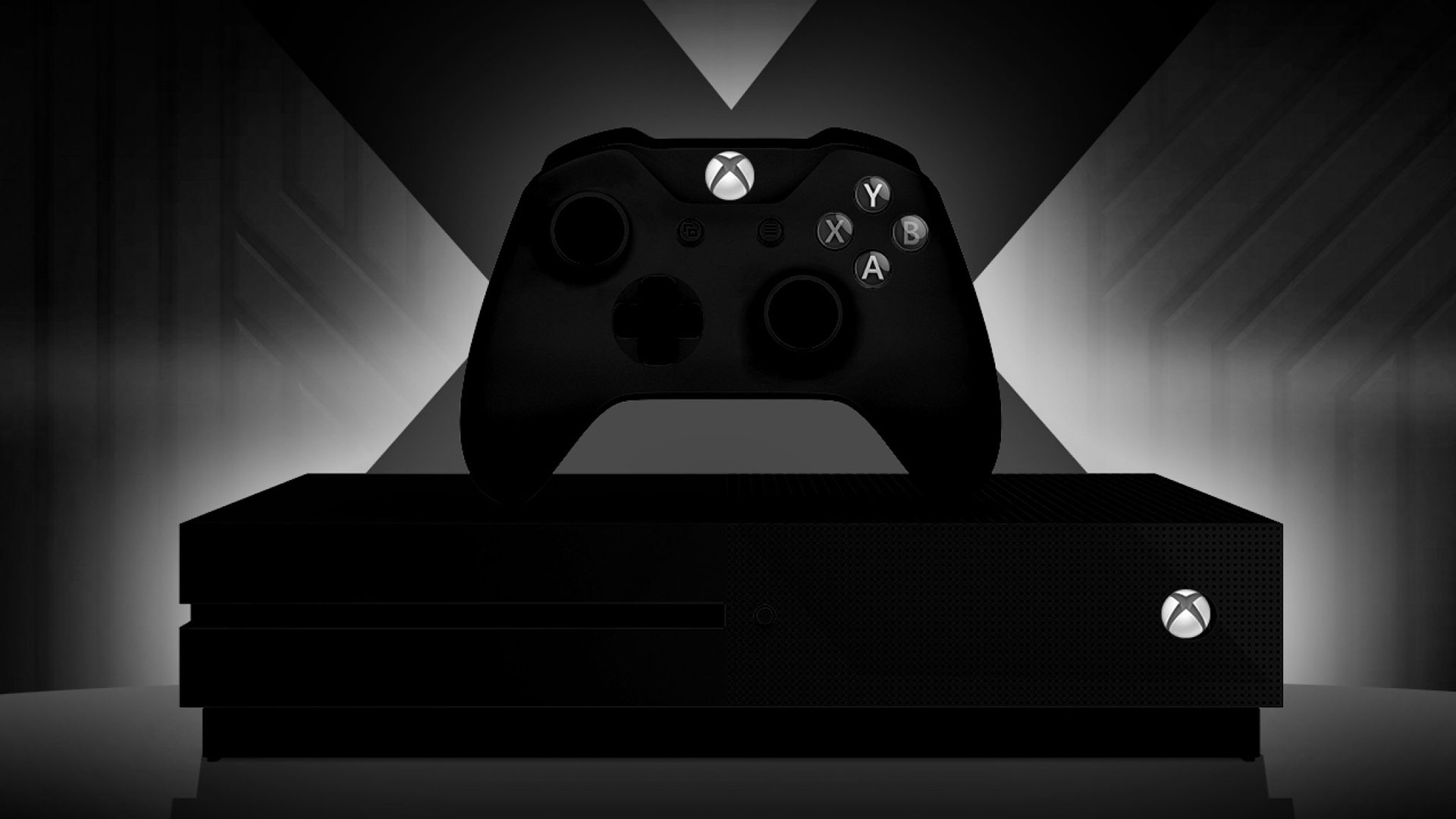
Microsoft won't be pinned down on an Xbox Series X price point quite yet – unsurprisingly, given what a sore spot the price of the Xbox One was for fans. At launch, the original Xbox One cost a whopping $499 / £429 / AU$599, which was quickly reduced when Microsoft realized people weren't forking out.
Microsoft has at the very least promised that it's learned from this pricing mistake, with Phil Spencer stating that this time "we will not be out of position on power or price.” That doesn't mean that the new Xbox will be cheap, mind you, it just means the price point will be better aligned with the console's power and the price points of the competition.
After all, Jason Ronald, director of the Xbox platform, gave only a vague reassurance when speaking to Windows Central, saying that Microsoft knew "what reasonable price points are for a console and kind of what customers expect about that".
Price will at least in part be determined by the cost of the components going into the console: Xbox Series X is going to be a lot more powerful than either the Xbox One S or Xbox One X, and that will likely mean we're looking at an even higher price tag on any bundles and Xbox Series X pre-orders.
It could be a while before we get confirmation of the Xbox Series X price - possibly months. Historically we've seen both Microsoft and Sony reveal their console pricing around June or July, but this time things are a bit different. The hot topic of pricing has many on the edge of their seats, as we see just how powerful the PS5 and Xbox Series are, and wonder how expensive the technology will be.
It seems like we're currently in something of a standoff, with both companies waiting to see what the other will price its next-gen hardware at - possibly so they can undercut each other. It looks like Sony and Microsoft will be waiting until the last possible moment to set their pricing, with plenty of time before then to make adjustments. Still, enough time will need to be set aside before the consoles release between October and December for people to get those pre-orders in.

- CPU: 8x Zen 2 Cores at 3.8GHz (3.6GHz with SMT) 7nm
- GPU: 12 TFLOPs, 52 CUs at 1.825GHz, Custom RDNA 2
- Memory: 16GB GDDR6
- Storage: 1TB custom NVMe SSD
- Optical drive: 4K UHD Blu-ray
- Ports: HDMI 2.1 output, 3x USB 3.2, networking port, expanded storage slot, power input
- 120 fps support
- Potential 8K resolutions
- Ray-tracing technology
- Variable Rate Shading for more stable frame rates
- Compatible with Xbox One accessories
- Smart Delivery
We now know what Xbox Series X looks like and what it's packing under the hood, and it's going to be an absolute beast of a console.The next Xbox's gaming PC design is pretty apt, considering the next-gen console's internal hardware is comparable to one - so make sure you check out our Xbox Series X spec analysis.
Microsoft has finally revealed the Xbox Series X specifications in full, leaving no one in doubt about how powerful its next-generation games console will be.
The folks over at Eurogamer’s Digital Foundry got a close look at the hardware, and alongside Microsoft have announced the hardware that will be powering the Xbox Series X. According to Digital Foundry, the specs confirm that the Xbox Series X will indeed be twice as powerful as the Xbox Once X… in practise.
Digital Foundry saw an unoptimized version of Gears 5 running on the Xbox Series X running at the equivalent of ‘Ultra’ graphics settings on PC, and it comes with enhanced shadows and ray tracing. Where the cut scenes ran at 30FPS on the Xbox One X, Digital Foundry reported that on the Xbox Series X, it runs at a ‘flawless’ 60FPS. Also, this is an early port – on release we should see even better results.
As expected, the Xbox Series X processor is built into a custom Project Scarlett SoC (System on Chip), which uses an enhanced version of TSMC’s 7nm process. That seven nanometers is important. The smaller the process, the more efficient the chip can be. That means it can provide more performance for less power.
Making sure the chip inside a games console can perform well without using lots of power (and getting hot) is incredibly important. Based on the prototype hardware Digital Foundry seen, the Xbox Series X reportedly ships with a 315W power supply - delivered internally but the console is also equipped with parallel cooling architecture, allowing cool air in and letting that cool air stream through separate areas of the console.
The processor is a customized AMD Zen 2 CPU with eight cores and 16 threads, with a peak speed of 3.8GHz, and a base speed of 3.6GHz.
As Digital Foundry reveals, these frequencies aren’t completely locked, which suggests the Xbox Series X could adjust the power of the CPU based on workload and thermals. So, if you’re playing a game that needs a lot of processing power, the Xbox Series X can give its CPU a boost, and then slow it down when you don’t need it.
Meanwhile, the GPU of the Xbox Series X is revealed as a custom design with 12 teraflops of compute performance, with 3328 shaders allocated to 52 compute units, and runs at a locked 1,825 MHz. Interestingly, there’s no boost clocks for the GPU. It will always run at that speed.
It also uses AMD’s RDNA 2 architecture, and offers ray tracing for photo-realistic lighting.
What does this mean in the real world? It seems the Xbox Series X will have the graphical power acquirement to a gaming PC with an Nvidia RTX 2080 graphics card. So, a very capable device indeed, but maybe not able to compete with the most powerful gaming PCs.
The Xbox Series X also gets 16GB of GDDR6 memory – an upgrade from the Xbox One X’s 12GB GDDR5.
That won’t all be used in games, however. Games will get a total of 13.5GB – 10GB of GPU optimal memory and 3.5GB of standard memory, while the remaining 2.5GB is reserved for the operating system.
The faster GDDR6 memory should also offer a big leap in performance. Match that with a super-fast NVMe SSD, and the Xbox Series X should feel very spritely when used.
There’s still a lot of questions over what kind of performance we can expect from the Xbox Series X, but this is by far the best look at the hardware we’ve seen.

But what else do we know about the Xbox Series X's specs? Well, Microsoft is aiming to get Xbox Series X games to run at 60 FPS in 4K, calling the challenge a "design goal". The console will support up to 120 FPS too.
Despite 4K being the aim, Microsoft has said the Xbox Series X has 8K capability. Phil Spencer even changed his Twitter profile photo to (what appeared to be) a picture of the next-gen Xbox Series X's processor. It said 'Project Scarlett' on it, and was marked with '8K' (pictured above), suggesting Microsoft plans on doing more than simply talking the talk when it comes to 8K.
The Xbox Series X will also feature Variable Rate Shading, which prioritizes effects on different in-game characters and objects for a "more stable frame rate and higher resolution", according to Microsoft.
Not only will games look better, they could be bigger. In an interview with PCGamesN, Samsung revealed that it's talking with Microsoft and pushing the gaming behemoth to adopt ultrawide support for the Xbox Series X.
The Xbox Series X will make good use of having an SSD – a 'Quick Resume' feature for the console will let you "almost instantly" continue with multiple games, without the need to sit through load screens.
Microsoft also aims to improve latency through features such as Auto Low Latency Mode (ALLM) and Variable Refresh Rate (VRR). According to Microsoft, "ALLM allows Xbox One and Xbox Series X to automatically set the connected display to its lowest latency mode". While "VRR synchronizes the display’s refresh rate to the game’s frame rate, maintaining smooth visuals without tearing". These features aim to minimize lag and make gaming more responsive.
However, don't expect video to do the Xbox Series X's power justice. Xbox boss Phil Spencer believes that it’s been challenging to demonstrate just how much of a leap Xbox Series X will be over Xbox One, as faster and more stable frame rates aren’t something that really comes across in videos.
Speaking to ex-Nintendo of America president Reggie Fils-aime on his new podcast (thanks, GameSpot), Spencer lamented the fact that gamers might not appreciate the power of Xbox Series X just yet.
"One of the things I've talked about publicly ... but it's hard to come across, is the way it feels to play games on a box where frame rates are higher, frame rates are more stable," Spencer explained. "The fluidity of it, showing that in video form, is just impossible. How do you show how something feels?"
He went on to add: "We're getting to the point where the immersion feel that you get through fluidity and other things is now up to par with the visual capabilities that we have. How do you share that with people in this kind of world?"
If you're less bothered about the specs and more concerned about whether you can still play physical games on the next Xbox, then you'll be pleased to know that Xbox Series X has a physical disc drive.
Microsoft has also confirmed that all your current Xbox One accessories will work with Xbox Series X, including existing controllers and headsets. But we'd doubt that also includes the ill-fated Kinect motion tracker.
That means that the Xbox Elite Wireless Controller Series 2 will be forward compatible with Series X, but Microsoft is also launching a next-generation wireless controller to accompany the new console.
But don't expect the Xbox Series X to launch with VR support as, according to Xbox boss Phil Spencer, Microsoft is waiting until VR on Xbox becomes a "no brainer". However, right now, the company doesn't see the feature as "so important" on its next-gen hardware.
- Read our guide to getting ready to upgrade your TV for Xbox Series X
- Here's how to get Microsoft's 4K theme for free on PC
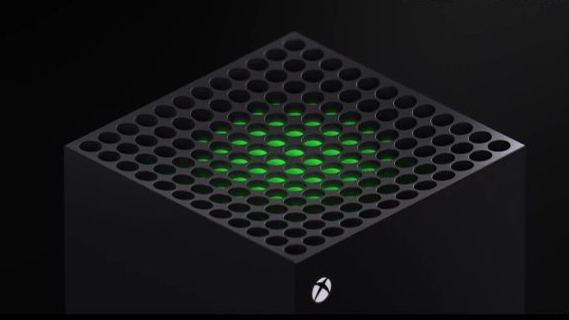
Xbox Series X has a completely different design to its predecessors. For a start, the next-gen console has an upright tower design - similar to that of a gaming PC. However, Microsoft has confirmed Series X can sit horizontally or vertically.
From what we've seen in the Series X reveal trailer, the console is black with slightly indented cooling vents on the top (with what seems to be a green light inside). The Xbox logo sits small on the top left hand corner of the console and there's still a disc drive - which is placed vertically on the left hand side also.
The Xbox Series X has the following ports: HDMI 2.1 output port, three USB 3.2 ports, one networking port, an expanded storage slot and a power input port.
The console reportedly measures 15.1cm x 15.1cm x 30.1cm and weighs 4.45kg/9.8lbs.

While these images have been circling for a while now, we still weren't entirely sure what that mystery port was - until now. Thurrott claims that sources "familiar with the company's plans" have identified the port as being for storage expansion.
Microsoft hasn't confirmed it this is the case, but we wouldn't be surprised if it was seeing as external storage was supported with the Xbox One - but whether we see it included in the final Series X product is still uncertain.
In addition to the console design, we also know what the new Xbox logo will look like.
Spotted on Reddit by Windows Central, an official trademark listing for the Xbox Series X logo was filed on April 16, 2020, showing a very different look to what we've seen for Microsoft's consoles to date.
The logo shows the word 'Series' in a vertical formation, next to a stylized 'X'. It's a more mature and minimalist design for Xbox, but it's somewhat simplistic and – in our opinion – looks more suited to a sports brand.

According to the patent, this is the Xbox Series X logo we'll see on everything from the console itself to clothing, keychains, toys and even kitchen utensils. Although, we think Microsoft is just trying to cover all bases and it's unlikely we'll see an Xbox Series X spatula anytime soon.
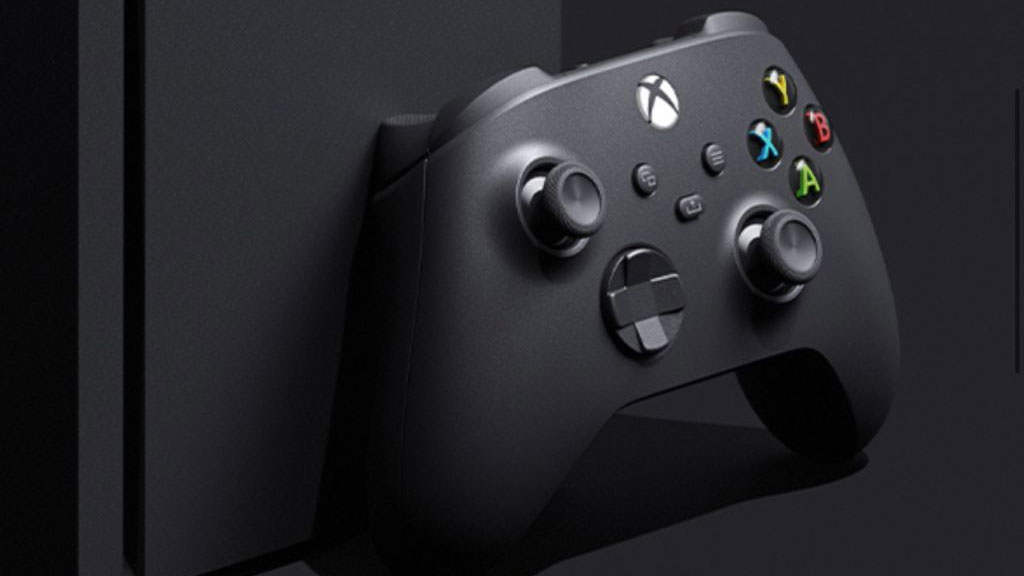
Microsoft is releasing an Xbox Series X controller to accompany its next generation console. The new Xbox Wireless Controller will apparently be more accessible to everyone, as Microsoft has made an effort to refine the size and shape.
This shouldn't be too surprising to anyone that's been following the tech giant, as it's been making waves for accessibility in gaming for a while now with products like the Xbox Adaptive Controller. Along with enhanced accessibility, we'll also be getting a dedicated share button (finally) that will let you share screenshots and videos with your friends.
Microsoft has also revealed that it is optimizing latency in the "player-to-console pipeline" starting with our Xbox Wireless Controller, through a new feature called Dynamic Latency input. According to the company, this feature "synchronizes input immediately with what is displayed", making controls "more precise and responsive".
- PS5 DualSense controller vs Xbox Series X controller
- Xbox Series X controller: everything we know so far
- Here's everything we know about the DualSense PS5 controller
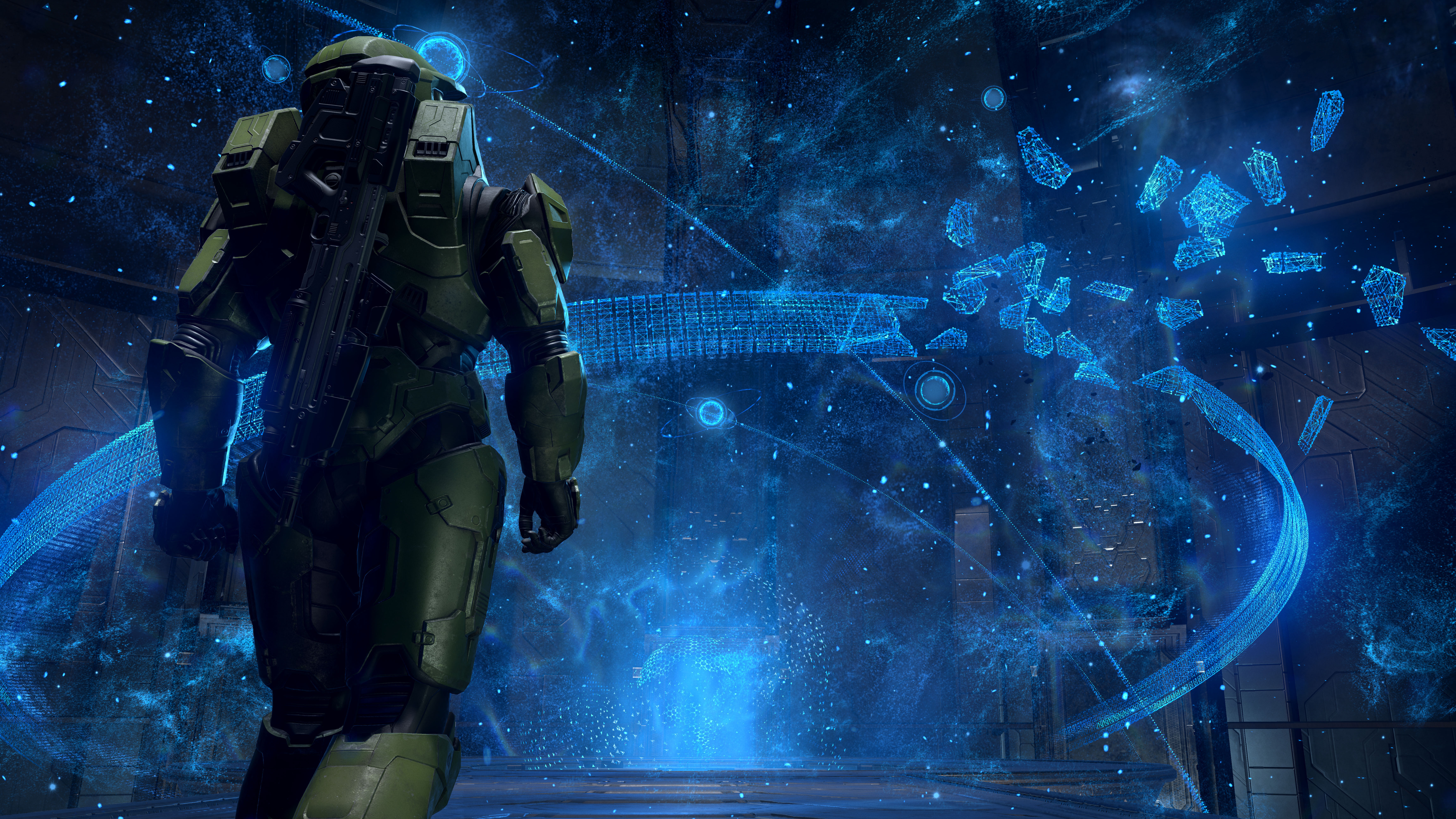
We got our best look yet at the upcoming Xbox Series X games lineup during the Xbox Series X gameplay reveal on May 7, with Microsoft revealing a roster of third-party games coming to the new Xbox including Dirt 5, Scorn Madden 21 and more. We also got to see gameplay for Assassin's Creed Valhalla for the first time. All of the games shown are optimized for the Xbox Series X (and will therefore make the most of its powerful specs).
But what else do we know about Xbox Series X games so far? During the Xbox Series X's official reveal, Phil Spencer said Series X games will be "more lifelike, immersive and surprising" and that the Xbox Series X will "lead us into the future of gaming". He also stated that 15 Xbox Game Studios are building a huge next-generation library that includes Hellblade 2: Senua's Saga and Halo Infinite.
Not a Halo fan? Don't worry, Xbox Series X will be capable of four generations of backwards compatibility - with the feature available from launch. That means the Series X will be able to play existing Xbox One games, including backward-compatible Xbox 360 and original Xbox games. Not only that, but these games will "play better than ever before" thanks to Microsoft's new HDR reconstruction technique and the Xbox Series X's Quick Resume feature - without requiring additional work from developers.
In addition, the Xbox Series X's powerful specs will enable select backwards-compatible titles to run at higher resolutions or double the frame rate.
Not only is Microsoft doubling down on backwards compatibility, but the company is also introducing a new system called Smart Delivery to the Series X that, in some respects, could be seen as forwards compatibility. During the May 7 reveal, Microsoft revealed just some of the games which will make use of this feature.
With the Xbox Series X, Smart Delivery will seemingly ensure that you have the right version of a game, no matter which Xbox console you’ve bought it on. CD Projekt Red has confirmed that Cyberpunk 2077 will make use of Smart Delivery and will offer those who own Cyberpunk on Xbox One the ability to upgrade to the Xbox Series X version for free. In addition, the company has revealed that, while Cyberpunk will be available on Xbox Series X "from the get-go", a "proper, full-blown next-gen" version of the game will come at a later date. This is apparently the upgrade the developer was referring to.
In addition, Microsoft will avoid siloing by taking a cross-generation approach to its first-party games. Talking to Stevivor, Phil Spencer said Microsoft wants to create a console that utilizes Xbox Play Anywhere so you can move seamlessly between devices: "Our goal for our first-party games is that your entitlements will be cross-generation and your Achievements will move effectively with your save game because that’s where they stand.”
In addition to the Xbox Series X games announced at the gameplay reveal, we already have confirmation of a number of other third-party games making their way to the Xbox Series X including a remake of THQ Nordic's cult classic Gothic, Battlefield 6, Gollum, WRC 9, Dying Light 2, Cyberpunk 2077 and Outriders will land on Xbox Series X. In addition, Ubisoft has confirmed that Watch Dogs: Legion, Rainbow Six Quarantine, Gods and Monsters and Assassin's Creed Valhalla are coming to PS5 and Xbox Series X - with a new Far Cry also rumored to be coming to the platforms. Ubisoft has even said it could delay these games if the next-gen consoles miss their launch window. We also know Rainbow Six Siege will be available on Xbox Series X and PS5 from launch.
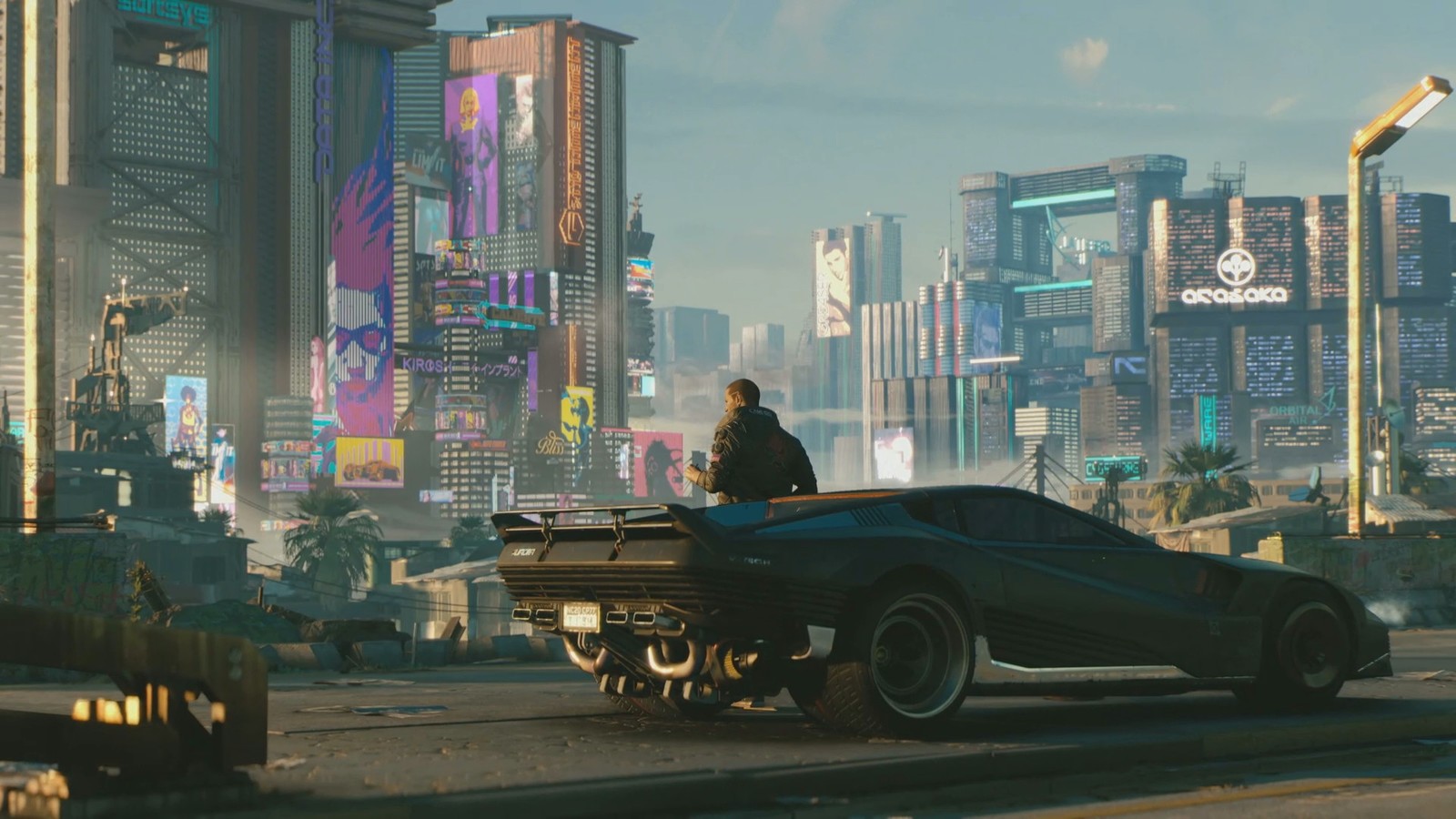
We're also expecting Microsoft's game-streaming service Project xCloud to be out of public testing by the time Xbox Series X releases (with a launch date slated for this year) so we should hopefully be able to enjoy Series X games on-the-go.
For those who aren't quite sold on upgrading to Series X quite yet, but still want to check out the best upcoming games, Microsoft has stated that there won't be Xbox Series X exclusive games for at least a year and, for the foreseeable future, new games are planned to work across the Xbox family of devices. That means you'll still be able to play them on Xbox One.
- Xbox Series X games: all the games confirmed and expected
- Xbox Game Pass vs PS Now: which is the best game subscription service?
- Best Xbox One games: the most essential Xbox One releases

We knew what the Xbox Series X will look like, a few of the features on offer, and a good deal about specs the next Xbox is boasting. But May 7 was when we first saw Xbox Series X gameplay revealed.
According to Microsoft, this event would see us fans getting a first look at next-gen gameplay, trailers and sneak peeks from Xbox's third-party partners, an update on how devs are utilizing the Xbox Series X and, finally, confirmation of the Xbox Series X games that will use Smart Delivery.
With no look at the console itself, or its interface features, this was all about third-party titles – and ultimately we felt it was a little underwhelming, with no standout titles to shout about.
However, this May 7 event is only the start of Microsoft's next-gen reveal plans. According to the company, this event will kick off Xbox 20/20, a stream which will take place each month throughout the rest of the year in the lead-up to the launch of the next-gen console.
"Starting with the May 7 episode of Inside Xbox, we will be showcasing what happens next in the world of Xbox, every month, which is why we’re calling it 'Xbox 20/20'," Jerret West, CVP of gaming marketing at Xbox wrote on Xbox Wire.
"These monthly moments will take place throughout the rest of the year and will be a way for us to engage, connect and celebrate with you about what’s in store for the next generation of gaming, including what’s next for Xbox Series X, Xbox Game Studios, Xbox Game Pass and Project xCloud. Every month will bring something different."
Microsoft has already confirmed we'll be seeing more of Xbox Series X first-party games at Xbox 20/20 in July, including Halo Infinite.
We expect that these streams will entirely replace the Xbox's presence at E3 2020, which Microsoft was confirmed to be attending until it was cancelled – given the circumstances right now, a remote event makes a lot of sense.

The Xbox Series X will not be the only new Xbox in Microsoft's next-generation lineup. While we were all pretty excited when Microsoft unveiled the next Xbox at the Game Awards 2019, it appears that the upcoming console's name isn't quite what we thought - and it will belong to a family.
While we assumed that the new Xbox is called 'Xbox Series X', Microsoft has clarified that, in fact, the family of consoles will be called 'Xbox' and that 'Series X' is just one of the consoles within the family.
This clarification from Microsoft serves to further fuel rumors that another new Xbox console is on the way. Rumors have circulated for some time about a lower-cost next-gen Xbox console that would sit just below the high-end Xbox Series X - codenamed 'Project Lockhart'.
Project Lockhart will allegedly be disc-less console - a trait that it will carry forward from the Xbox One S All-Digital Edition - but Kotaku's sources believe it will be substantially more powerful than Microsoft’s current disc-less box, and will come with both a solid-state hard drive and a faster CPU than any current game console.
The report goes on to say that Microsoft told developers to shoot for a 1440p resolution and 60 frames-per-second frame rate with Project Lockhart and 4K/60 with Xbox Series X, and those same developers have likened the performance of the lower-end console to the PS4 Pro.
- Xbox Series X vs PS5: what we know so far
- These are the best Xbox One gaming headsets
- Xbox Series X games won't leave older Xbox One consoles behind
from TechRadar: computing components news https://ift.tt/2RK8yNU
via IFTTT
Biostar's Two New H410 Motherboards: H410MHG and H410MH
Not only did Intel unveil its Z490 motherboard chipset for Intel's 10th generation desktop processors, but it also announced its more budget-friendly chipsets. Biostar has announced two new micro-ATX H410 models, the H410MHG, and the H410MH, aimed at the low cost and high volume market. Both with simplistic designs and budget-friendly controller sets, both models include Realtek Gigabit networking, Realtek ALC887 HD audio codecs, as well as four SATA ports and a single PCIe 3.0 x4 M.2 slot.
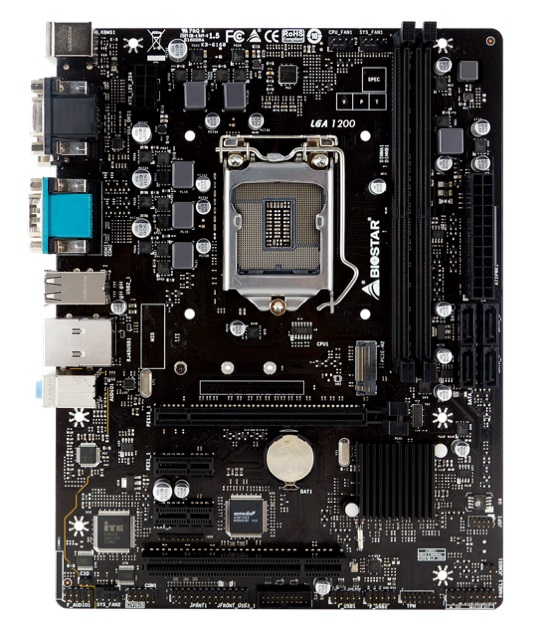
Biostar H410MHG micro-ATX motherboard
Starting with the higher-specification of the two new H410 models from Biostar, the H410MHG includes TPM technology which adds hardware-based security functionality designed for cryptographic operations. In regards to PCIe, it consists of a single full-length PCIe 3.0 x16 slot, two PCIe 3.0 x1 slots, and a single PCI slot. There are four straight-angled SATA ports below the 24-pin 12 V ATX motherboard power input, while a single 8-pin 12 V ATX input provides power to the CPU. On the rear panel is two USB 3.2 G1 Type-A, and four USB 2.0 ports, with an HDMI, DVI-D and VGA port allowing users to use Intel's integrated UHD graphics. A COM port, a PS/2 mouse and PS/2 keyboard port are also present for users looking to use legacy peripherals. For cooling, the H410MHG also has three 4-pin fan headers, one for a CPU fan, and two for chassis fans.
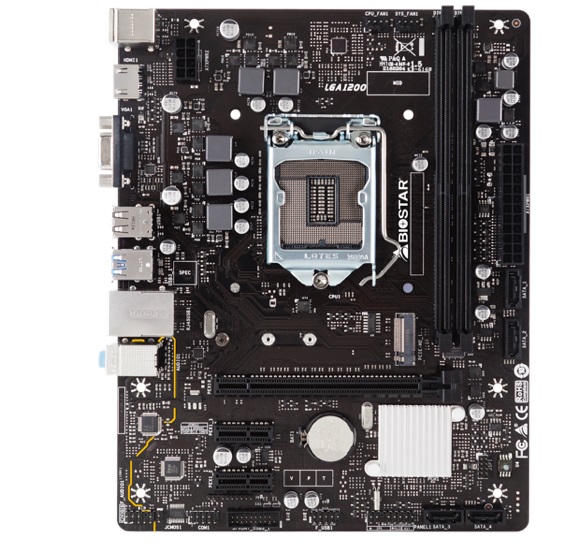
Biostar H410MH micro-ATX motherboard
The Biostar H410MH has a single full-length PCIe 3.0 x16 slot, and two PCIe 3.0 x1 slots, with four SATA straight-angled SATA ports, and offers a slightly lighter rear IO panel. It includes separate PS/2 keyboard and mouse ports, two USB 3.2 G1 Type-A, four USB 2.0 ports, and two video outputs consisting of HDMI and VGA. For the cooling, it has just two 4-pin headers with one dedicated for a CPU fan, and the other for a chassis fan.
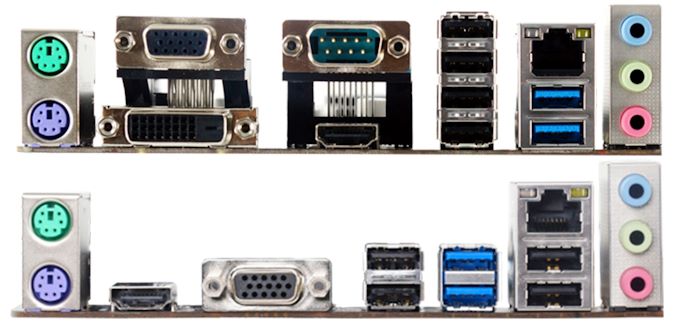
Biostar H410MHG (top) and H410MH (bottom) rear panels
Shared across both models includes the memory and networking support, with a Realtek RTL811H Gigabit Ethernet controller, and two memory slots with support for up to 64 GB of DDR4-2933 memory. The H410MHG and H410MH also feature a Realtek ALC887 HD audio codec which provides three 3.5 mm audio jacks on the rear panel, as well as a single PCIe 3.0 x4 M.2 slot with support for both NVMe and SATA drives.
Although Biostar hasn't announced pricing or availability for the H410MHG and H410MH models, likely, they won't be too expensive. Designed more for cost-focused users looking for a foundation while leveraging the power of Intel's 10th generation processors, both of these micro-ATX H410 models include access to the Biostar VIP Care portal for additional support from Biostar.
Related Reading
- The ASRock Z490 Taichi Motherboard Review: Punching LGA1200 Into Life
- AMD's B550 Motherboards Start Appearing Online
- New Q470E and H420E Embedded Motherboards From ASRock
- Intel Z490 Motherboards Available For Pre-Order: From $150 to $1299
- The Intel Z490 Overview: 44+ Motherboards Examined
from AnandTech https://ift.tt/2TREQa7
via IFTTT
PS5 release date, specs, news and features for Sony’s PlayStation 5
The PS5 (or PlayStation 5) is the next-generation PlayStation, with a release date planned for late 2020. Although Sony has remained tight-lipped about its new console, it has drip-fed us a few juicy details on what we can expect from its next-gen offering, and we now know we'll finally hear about the PS5 games line-up on June 4.
We've already had our first look at the DualSense PS5 controller, which boasts some impressive-sounding features such as haptic feedback, adaptive triggers and a built-in mic. But what is arguably most interesting about the DualSense controller is its radically different look and space-age black-and-white color scheme, which suggests the PS5 design will look something similar – and will be a big departure from its predecessors.
Just as important as the DualSense Controller are the PS5 specs discussed at Sony's March reveal event. Lead system architect Mark Cerny provided us with a deep dive into the PS5's system architecture, revealing the technical inner workings of the PS5. We'll cover them in more detail down below, but for now know that the PS5 is rocking an AMD Zen 2-based CPU with 8 cores at 3.5GHz, 16GB of GDDR6 memory and a custom RDNA 2 AMD GPU that puts out 10.28 TFLOPs of processing power.
In terms of features, we know the next-gen console will have ray-tracing, a super-fast SSD, a built-in 4K Blu-ray player and will be backwards compatible with a huge swathe of the PS4's game catalogue. Heck, it might even have voice assistant capabilities to tell you how long it will take to beat levels. So far, the PS5 is living up to the hype.
Want all the juicy details? Here's everything we know about the PS5 so far – and what we hope will be revealed the closer we get to launch.
[Update: PS5 games reveal event confirmed for June 4. Read on to find out more.]
- What is it? The Sony PS5 is the next-gen PlayStation console, replacing the PS4 Slim and PS4 Pro.
- When will it release? "Holiday 2020" in the US, says Sony, so between October and December 2020.
- What can I play on it? Only a few titles have been confirmed, but expect all of Sony's big franchises, as well as the potential for upgraded versions of PS4 games like Ghost of Tsushima.
- Will PS5 have VR? Oh yes. The next-gen console will be compatible with current PSVR hardware, and there are also rumors of PSVR 2.
- What will the PS5 cost? TBC. The PS4 and PS4 Pro were both $399 / £349 at launch, but we expect the PS5 will cost somewhat more. Leaks have suggested around the $499 mark.
- Can I play PS4 games on the PS5? The PS5 will definitely be backwards compatible with "almost all" PS4 games - earlier generations are still to be confirmed. It will launch with support for the majority of the top 100 PS4 games, according to Sony's Mark Cerny.
- Will coronavirus delay the PS5 release? Sony has confirmed the PS5 release date is not currently delayed by coronavirus, and reiterated the fact that the PS5 is still on course for a "Holiday 2020" release in its end of year financial report.
After much rumor and speculation, Sony has confirmed it's hosting a PS5 games reveal event on June 4.
The PS5 game reveal event will be an hour-long presentation, called the 'Future of Gaming', and will give us our first look at the PlayStation 5's game line-up.
The presentation will air on June 4 at 1pm PT / 4pm ET / 9pm BST (or on June 5 at 6am AEST). Fans will be able to watch via Twitch, YouTube or the official PS5 website.
We've been expecting that Sony will host another PS5 reveal event sometime in the near future, but we weren't quite sure when.
In a corporate strategy meeting earlier this month, Sony president and CEO Kenichiro Yoshida stated that we will be seeing the "compelling" PS5 games line-up "soon", leaving many to speculate about a potential PS5 games reveal event date.
Bloomberg recently reported that a PS5 reveal event was planned for June 3, but did add the caveat that plans could change, given the current circumstances.
While VentureBeat’s Jeff Grubb, who spoke to sources under the condition of anonymity, uncovered Sony's plans to host big PS5 showcase sometime in the first two weeks of June – suggesting a (what we now know to be correct) date of June 4.
It seems this event will only focus on PS5 games, with Grubb claiming the showcase will include both first-party titles and third-party titles from Sony’s trusted partners. So don't expect any hardware.

God of War (Image Credit: SIE)
Sony has officially confirmed that the PS5 will release "in time for Holiday 2020", so likely some time between October and December 2020 - putting it in direct competition with the Xbox Series X, which is releasing in the same window. A leak has suggested that the release date will be November 20, 2020 but that's yet to be confirmed.
However, this date would be in the right window, as we're predicting the PS5 will release in November, 2020. November is historically when we've seen PlayStation's launch and it would leave time before Christmas to get those orders in.
AMD, the tech giant that’s been commissioned to make the processor and graphics chips in both the PS5 and Xbox Series X next-gen consoles, is “ramping up production” to prepare for their respective launches, AMD CEO Dr Lisa Su confirmed in early May 2020. This timing too is also suggestive of a November launch window.
Sony has frustrated some fans with the way it's drip fed information regarding the PS5. Sony CFO Hiroki Totoki seemingly isn't worried about the competition, though, and is confident the PS5 will beat the Xbox Series X in sales.
Despite rumors, a Sony has confirmed the PS5's release date has not been delayed by Covid-19 so we should still see the next-gen console release in late 2020 - even if we're not sure exactly when that will be.
We're expecting to find out the PlayStation 5's official release date in the coming months, having not been revealed at the March 18 technical talk.
- PS5 wishlist: the most wanted specs, features and games
- What E3 2020's cancellation means for PS5 and Xbox Series X
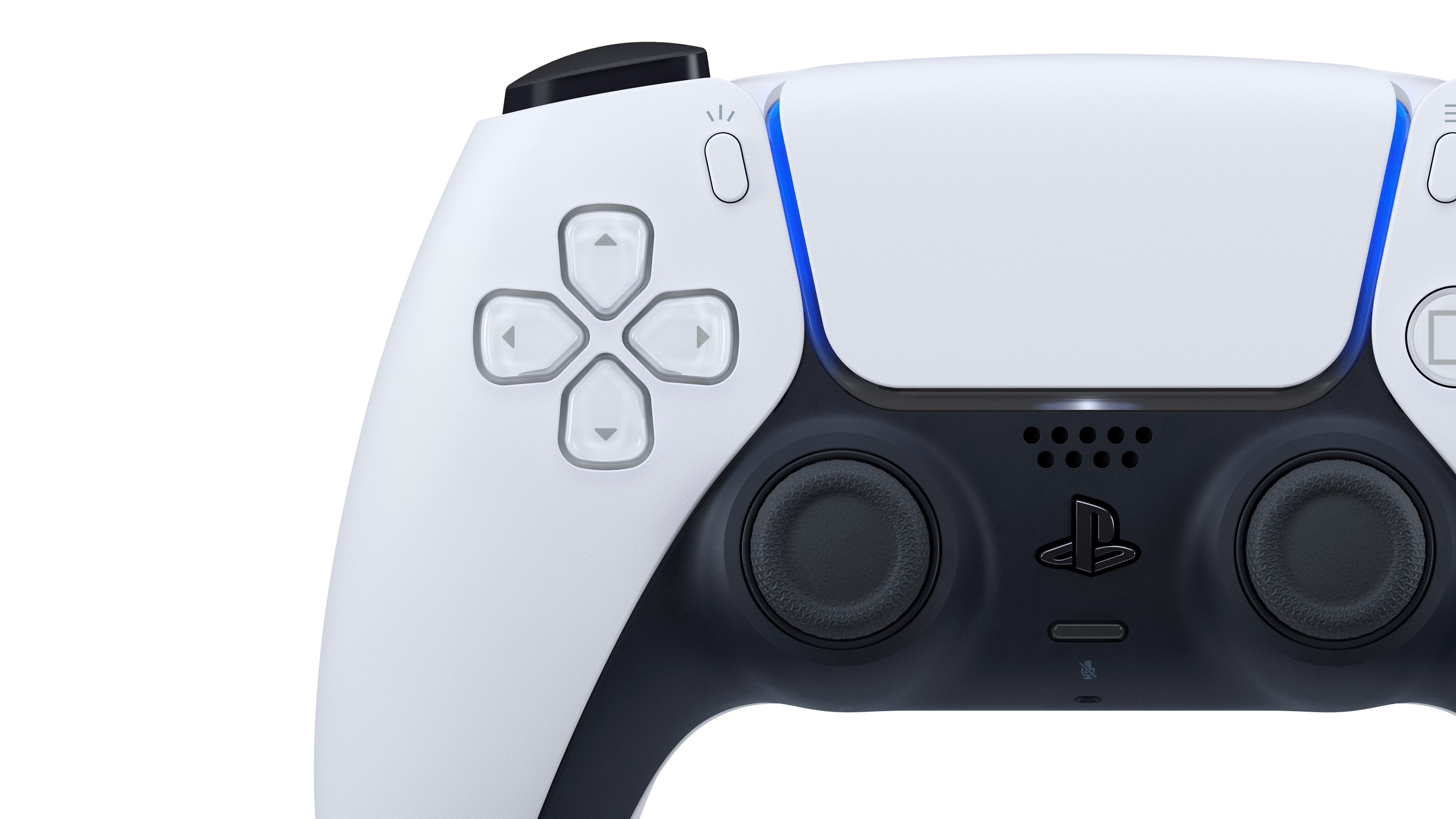
Death Stranding
Sony hasn't officially confirmed a PS5 price yet and, according to the company, that's because it hasn't actually decided how much the next-gen console will cost.
In a quarterly earnings call (via Spiel Times), Sony's chief financial officer Hiroki Totoki revealed the company still hasn't nailed down the PS5 price.
"What is not very clear or visible is because we are competing in the space, so it’s very difficult to discuss anything about the price at this point of time, and depending upon the price level, we may have to determine the promotion that we are going to deploy and how much costs we are prepared to pay," Totoki explained.
“It’s a balancing act it’s very difficult to say anything concrete at this point of time," Totoki said. But we do know that Sony is aiming for "the best balance so that we will be profitable in the life, during the life of this product."
While Sony may not have a price nailed down, there have been rumors about how much the PS5 could cost. While the latest PS5 price leaks are wild – and can't be trusted - some predictions seem a bit more feasible (even if they're not reliable).
One rumor has suggested that the console will cost $499 in North America when it launches. Naturally this should be treated with skepticism, but it would be welcome news if the console did launch at this price, as it's only $100 more than the launch price of the PS4 and PS4 Pro.
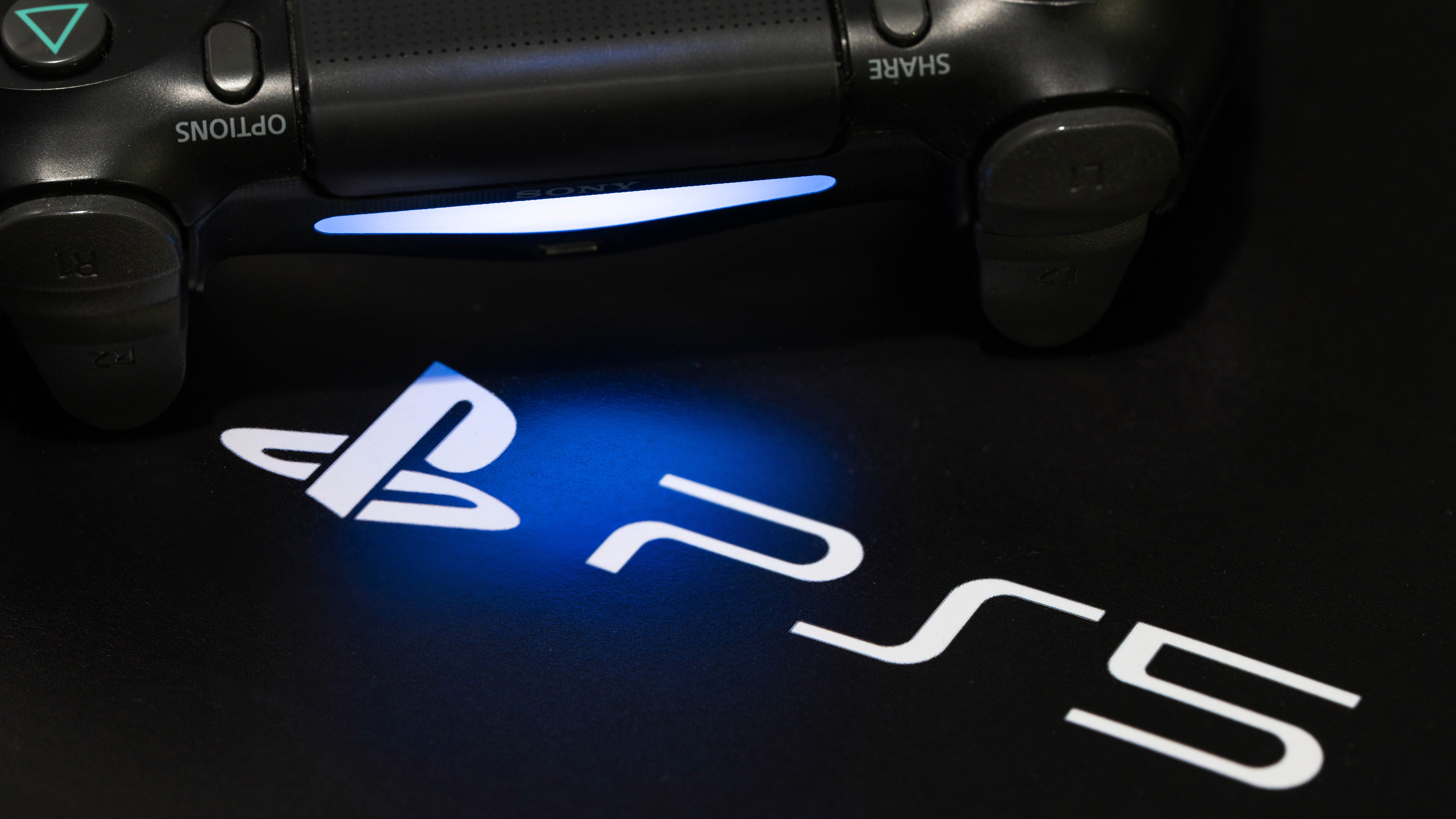
We think this could be the most likely price for the console, however, that could be wishful thinking. A recent report by Bloomberg claims that Sony will not be making as many PlayStation 5 consoles for launch as it did for the PS4's launch back in 2013, despite no delay to production or on sale date being expected.
According to the report, Sony is simply anticipating less demand. This is likely due to what is expected to be a higher asking price for the PS5 than the PS4 launched with. The PS5 is expected to really push the boat out in terms of high-end components, and as such will be met with a higher price tag.
Microsoft’s plans for the Xbox Series X are key here, and Sony could well decide to sell the hardware at a slight loss to stay competitive with the other console. The PS4 benefited from a lower cost than the Xbox One, and Sony likely won’t be keen to reverse that for this generation. We hope.
However, speaking on an episode of Geoff Keighley’s Bonus Round (via PushSquare), industry analyst Michael Pachter suggested that it could be Microsoft that considers taking a significant loss on the Xbox Series X to undercut the PS5's price.
We can only speculate about whether this will happen. But, while we can expect that the PS5's price will be in line with the technology it uses, Sony will also have to be aware of its competition. It's unlikely, with the Xbox Series X, that Microsoft will repeat the mistake it made by launching the Xbox One at a prohibitively high price point, so Sony will have to ensure that it doesn't make a similar mistake by making the PS5 too expensive.
It could be a while before we get confirmation of the PS5 price - possibly months. Historically we've seen both companies reveal their console pricing around June or July, but this time things are a bit different. The hot topic of pricing has many on the edge of their seats, as we see just how powerful the PS5 and Xbox Series are, and wonder how expensive the technology will be.
It seems like we're currently in something of a standoff, with both companies waiting to see what the other will price its next-gen hardware at - possibly so they can undercut each other.
It looks like Sony and Microsoft will be waiting until the last possible moment to set their pricing, with plenty of time before then to make adjustments. Still, enough time will need to be set aside before the consoles release between October and December for people to get those pre-orders in.
- No, the PS4 will not cost more than $1,000, and here’s why
- PS5 vs PS4 Pro: will it be worth the upgrade?
- PS5 price and pre-orders: how much will it cost and when can you buy?

Ghost of Tsushima (Image Credit: SuckerPunch)
- CPU: AMD Zen 2-based CPU with 8 cores at 3.5GHz (variable frequency)
- GPU: 10.28 TFLOPs, 36 CUs at 2.23GHz (variable frequency)
- GPU architecture: Custom RDNA 2
- Memory interface: 16GB GDDR6 / 256-bit
- Memory bandwidth: 448GB/s
- Internal storage: Custom 825GB SSD
- IO throughput: 5.5GB/s (raw), typical 8-9GB/s (compressed)
- Expandable storage: NVMe SSD slot
- External storage: USB HDD support (PS4 games only)
- Optical drive: 4K UHD Blu-ray drive
Sony finally lifted the hood on the PlayStation 5 during its first official PS5 reveal event, giving us a better idea of the specs the next-gen console will offer. But what do we think?
What's interesting so far is Sony's commitment to custom silicon, with a full focus on raising gaming capabilities to the next level, without alienating developers now comfortable with developing on the PS4. Custom hardware in the PS3 proved to be a difficult element for devs to get their heads around, but the PS5 aims to be as developer-friendly as possible.
- PS5 specs: why Sony faces an uphill battle
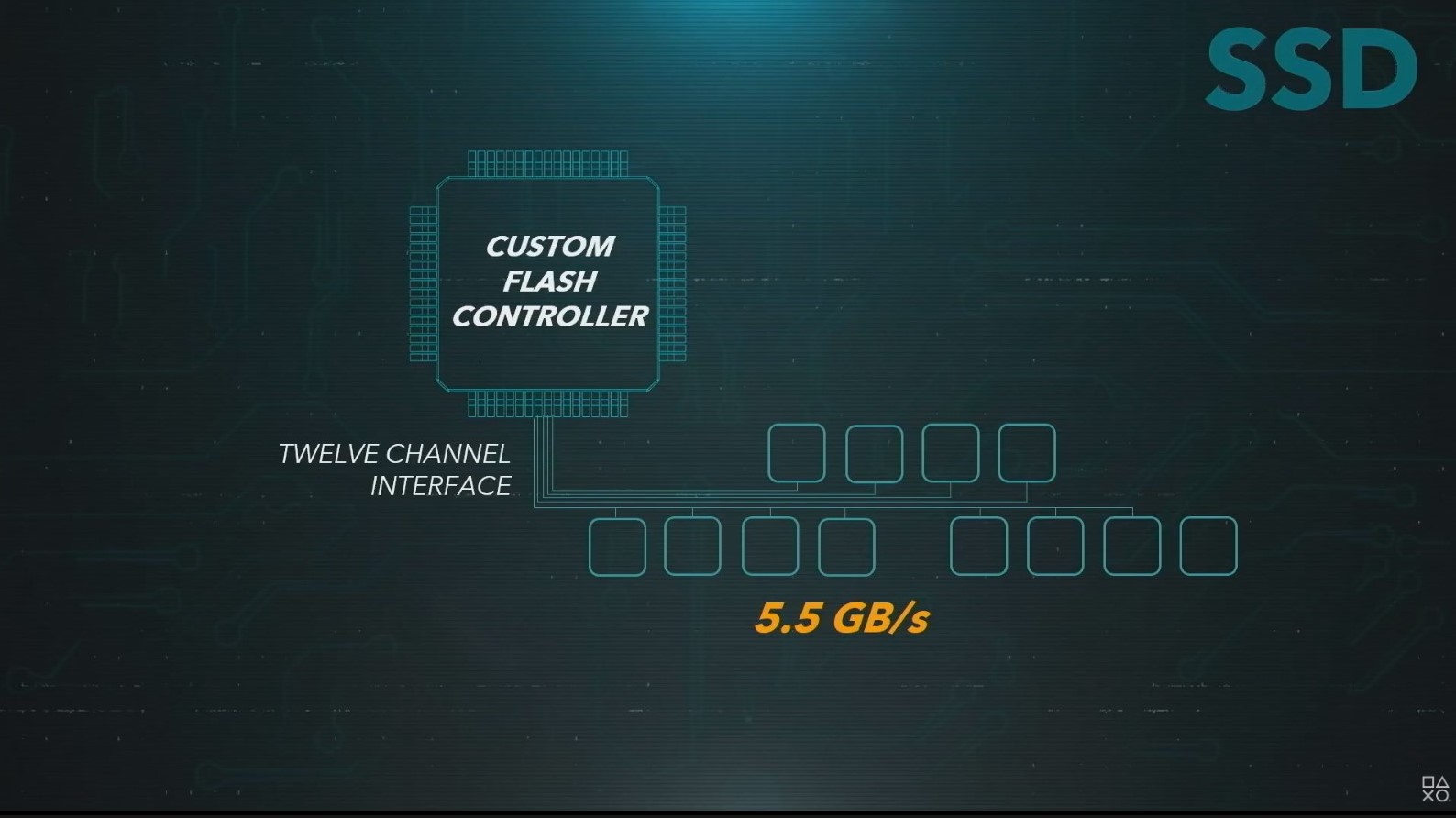
The importance of the SSD
As has already been explored, the SSD is key to the PlayStation 5 experience. Internal storage will be built in at 825GB for the custom SSD – that's less than you'll find in the Xbox Series X, but with just as clever an implementation of the technology.
SSDs don’t just load faster, but allow for bigger open worlds, theoretically. Developers don’t need to make games with smaller worlds due to the limitations of mechanical hard drives, while SSDs will also allow system memory to be used more effectively.
SSDs have more bandwidth, so data can be loaded from the SSD when it’s needed, rather than heaps of potentially needless data being loaded into RAM. In pure gameplay terms that means that games will suffer less from texture pop-in, while load times will be hugely reduced when using a game's fast-travel option. Booting up from standby should be generally much faster, too.
You'll also have more control over how you install and remove games, meaning you could just install a game's multiplayer mode rather than the full block of data. This will allow for launch of direct gameplay, allowing players to jump straight into aspects of different games (such as match-making, continue save game etc) without having to boot up the full game.
As for expandable storage, Sony appears to be allowing for off-the-shelf NVMe PC drives, rather than proprietary storage systems that Xbox will primarily be relying on. However, there aren't many drives on the market right now that use the PCIe 4.0 interface required – they need to be capable of at least a 5.5GB/s transfer speed.
"NVMe PC drives will work in PlayStation 5," said Cerny. "The only problem is that PC technology is significantly behind PS5. It'll take some time for the newer, PCIe 4.0-based drives with the bandwidth required to match Sony's spec to hit the market."
PS4 games on the PS5 will work just fine if saved to a regular HDD, however, so you won't need to tap into that precious SSD space unnecessarily.
When asked about the PlayStation 5’s speed compared to its current-gen console at a corporate strategy meeting, Sony made the bullish claim that PS5 will “revolutionize the game experience for users” in an official Sony document.
Sony CEO Kenichiro Yoshida added that the PS5’s custom-built SSDwill enable processing speeds that dwarf those found on PlayStation 4.
“In order to further enhance the sense of immersion in games, we expect to improve not just the resolution, but the speed of games,” the Sony document reads.
“For example, through a custom-designed high-speed SSD, we plan to realize game data processing speeds that are approximately 100 times faster than PS4. Game load times should be much shorter, and players should be able to move through immense game worlds in almost an instant.”
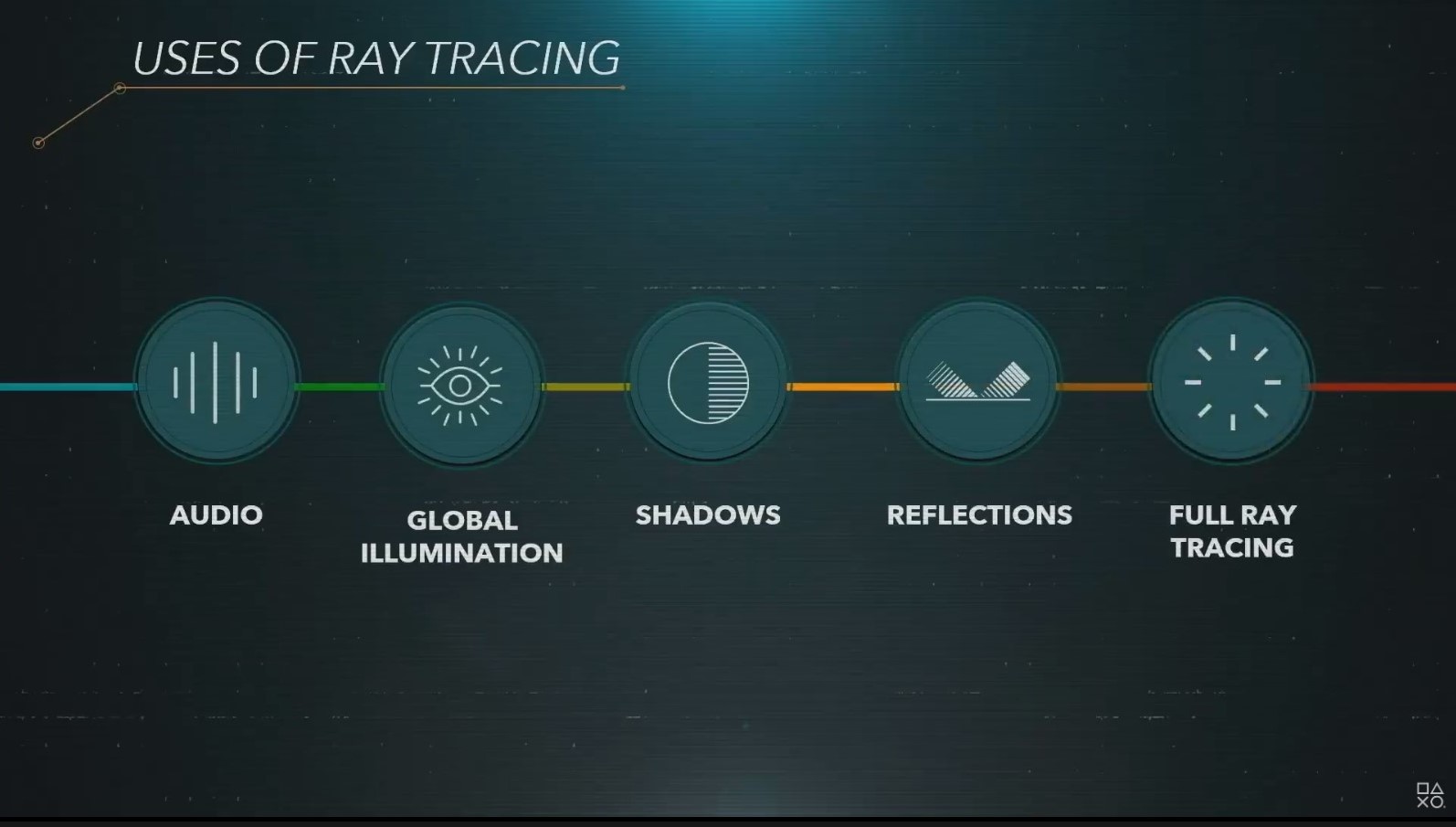
A custom processor and GPU – what that means for backwards compatibility
We were already aware that Sony will be using AMD's Zen 2 CPU processor tech, with eight cores and 16 threads. The reveal stream, however, also revealed that the PS5 will be delivering 3.5GHz frequencies – so, the PlayStation 5 would be running 8x Zen 2 Cores at 3.5GHz (at variable frequencies) over the PS4's 8x Jaguar Cores at 1.6GHz. That's a huge jump in performance.
Move over to the GPU, and you're looking at the AMD RDNA 2 GPU, itself customized. It makes use of 36 compute units capped at 2.23GHz. A compute performance peak of 10.28TF was stated.
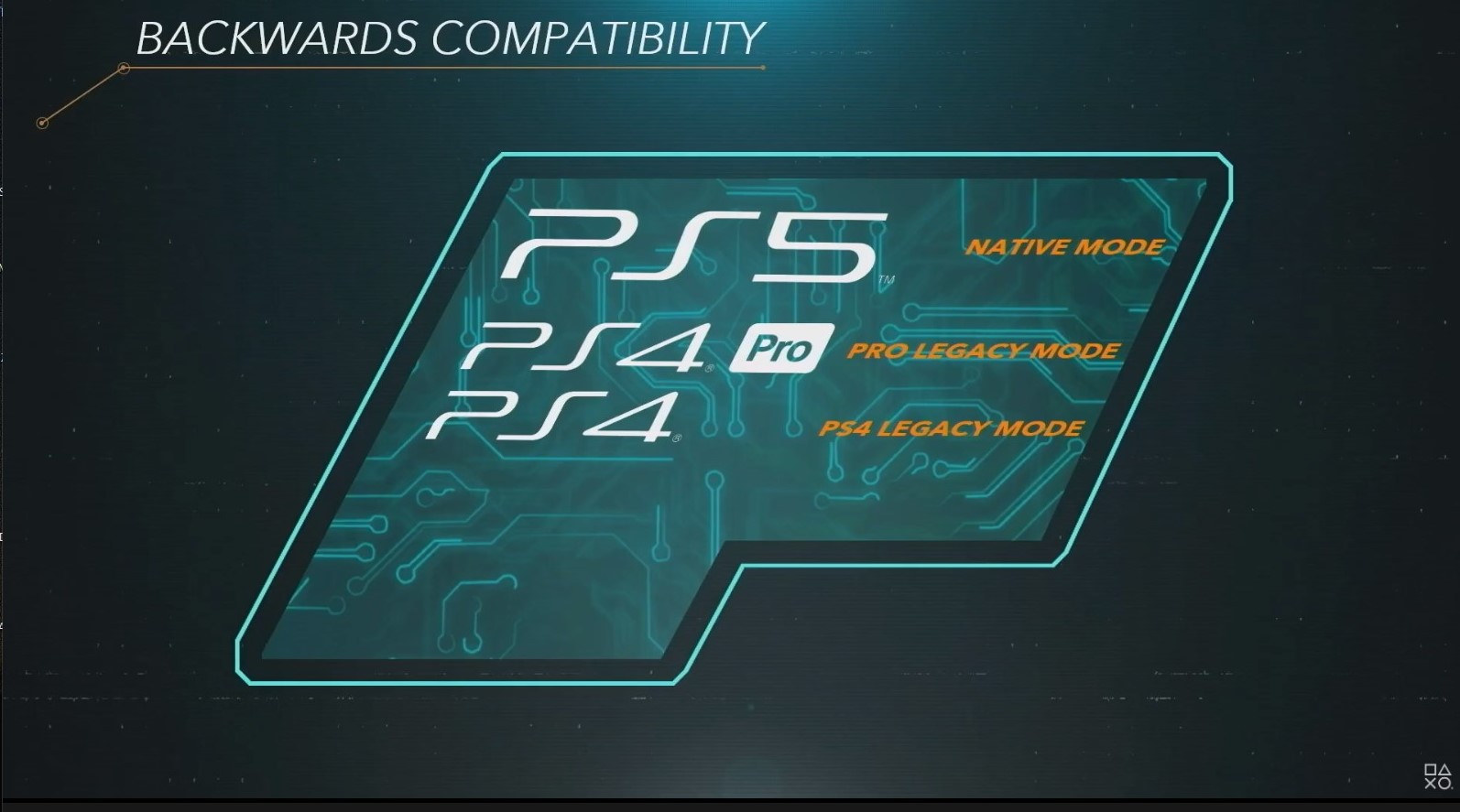
What's smart is that the combination makes it simple for the PS5 to easily handle PS4 backwards compatibility – through GPU architecture rather than hours of coding. Almost all of the top 100 PS4 games will be fully compatible at launch. PS4 games will be supported natively on the GPU silicon, but here the GPU seems to be emulating PS4 and PS4 Pro graphics chips, which is a strange solution, and not as interesting as Xbox Series X's method, which will also be capable of upscaling previous Xbox generation games and adding HDR to previously HDR-less titles.
Tempest 3D audio tech
Perhaps the biggest reveal of the day was the 3D audio support, thanks to the new Tempest Engine. It's an incredibly powerful system: if the PSVR can support "50 pretty decent sound sources," according to Cerny – with the PSVR's distinct audio system being one of the more complex audio systems in gaming at the moment – the PS5's Tempest Engine can support hundreds.
The example Cerny used described it in terms of rainfall. Today, the sound of rain in a game is a single audio track, but the PS5 would theoretically be capable of letting you hear individual raindrops, in relation to where the player character is.
"Where we ended up is a unit with roughly the same SIMD (single instruction, multiple data) power and bandwidth as all eight Jaguar cores in the PS4 combined," said Cerny.
The amount of attention Sony is heaping on its Tempest Audio Engine suggests it may be the secret weapon in the PlayStation 5 arsenal.
At a corporate strategy meeting for Sony, a slideshow called the PlayStation 5 an "evolution of sound".
"By installing a customized 3D audio processing unit in PS5, we have made it possible to deliver diverse and sophisticated 3D audio experiences," the slide read. "Players can experience sound that moves in from front to behind, above to below, and all around them."
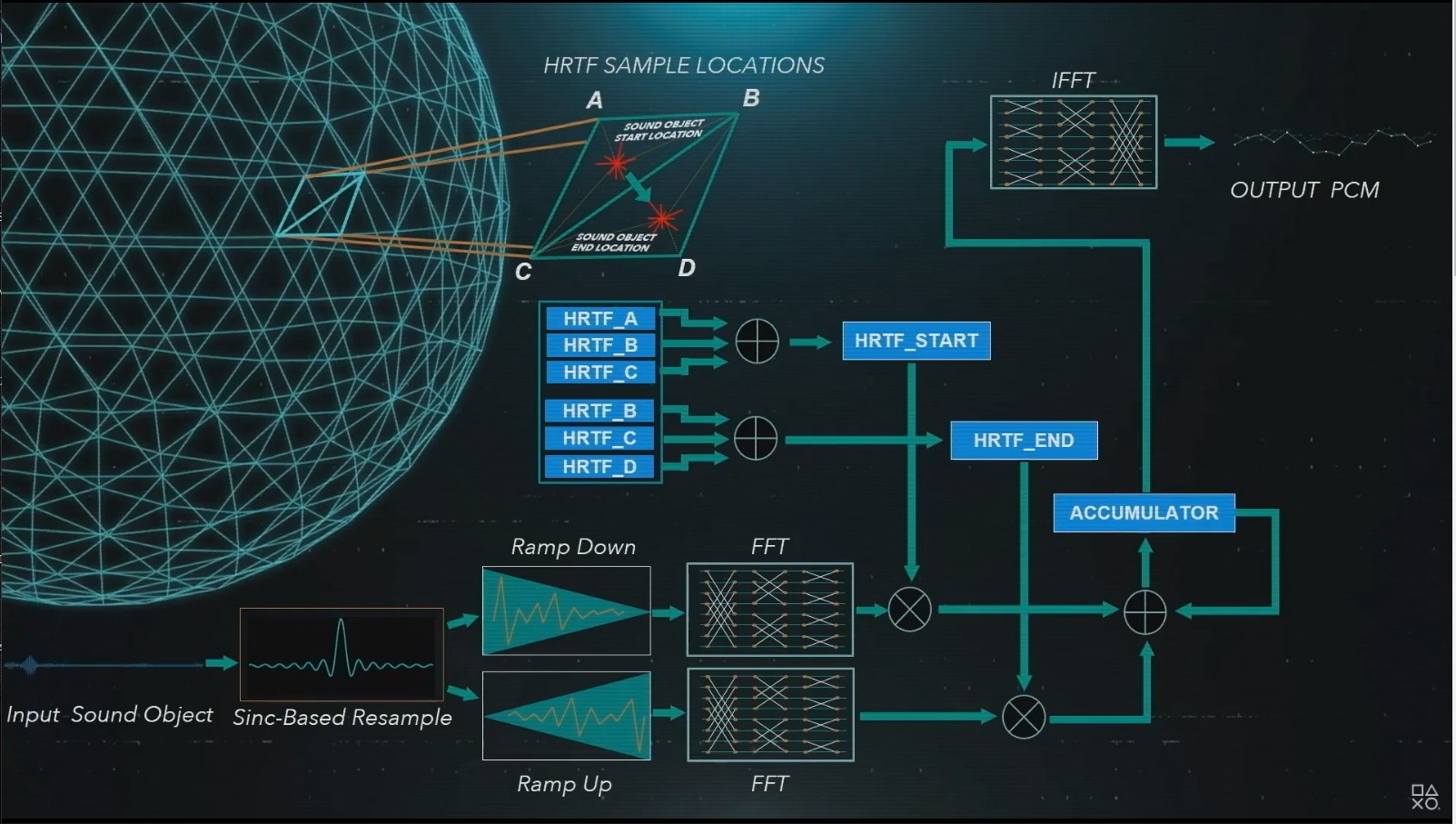
"If we were to use the same algorithms as PSVR, that's enough for something like five thousand sound sources – but of course we want to use more complex algorithms, and we don't need anything like that number of sounds."
Perhaps best of all is the way you'll get to experience this – even a lowly pair of headphones at launch will be able to take advantage of the sense of presence and directionality Sony is promising here, with the company also committing to later support multi-speaker surround systems with the tech.

But this is an ongoing project for Sony. To accurately model surround data positioning, Sony needs to create a Head-related Transfer Function, or HRFT, map. Essentially, that's a distinct algorithm that works best if the system knows the precise shape of your ears.
"Maybe you'll be sending us a photo of your ear, and we'll use a neural network to pick the closest HRTF in our library," Cerny teased. "Maybe you'll be sending us a video of your ears and your head, and we'll make a 3D model of them and synthesize the HRTF. Maybe you'll play an audio game to tune your HRTF, we'll be subtly changing it as you play, and home in on the HRTF that gives you the highest score, meaning that it matches you the best.
"This is a journey we'll all be taking together over the next few years. Ultimately, we're committed to enabling everyone to experience that next level of realism."
- What are teraflops? Let us explain
- Has the PS5 already been bested by a mid-range gaming PC?
- The PS5 will look nothing like its dev kit if history is anything to go by
There's still been no official PS5 design reveal, but the reveal of the DualSense PS5 controller has given us a fairly good idea of what we can expect the next-gen console to look like (we've even created our own PS5 render, which you can see above, based on what we know so far).
While we're mostly dealing with speculation, we can assume that the PS5 console's design will match (or at least be similar to) that of its controller. To date, PlayStation controllers have always matched their console counterparts – it would be odd for this not to be the case.
And, what's immediately striking about the DualSense controller is its new design; and, in particular, its two-tone white and black color scheme. This suggests that we could see a two-tone white and black PlayStation 5 console, similar to the controller, with the console itself boasting a primarily white design with black lining or sections.
Not only is the DualSense controller's color scheme different from what we've seen in previous PlayStation gamepads, but its overall shape and design is also a huge departure.
Sony has gone futuristic with the DualSense's design. And, while we know that the PS5 won't look anything like the dev kits we've seen so far, the alien-futuristic design may be in the right vein. The controller is white (as we've discussed) but looks pretty simple and sleek. With a boomerang-like rounded shape, no definition in the button colors, and a blue light on either side of the touchpad, it looks like Sony is aiming for a minimalistic, futuristic design for the PS5.
As we pointed out with the color scheme, PlayStation controllers often match their counterpart consoles, so we can expect a similar minimalist design for the PS5 – likely with blue lighting, slightly rounded edges and little definition when it comes to buttons and ports.

PS5 design render
However, all of this is mere speculation and we won't know for sure until Sony official unveils the PS5 design. We're expecting Sony to host another PS5 reveal around June or July to reveal the console's price and design - similarly to how it did with the PS4.
While we may not know exactly what the PS5 will look like, Sony did reveal the PS5's official logo at CES 2020. It's essentially just the PlayStation 4 logo with a '5' replacing the '4'.
- PS5 will double as a 4K Blu-ray player – here's why that matters
- How the PS5's 3D audio chip could transform your gaming experience
- Here's what we think the DualSense controller tells us about the PS5 design
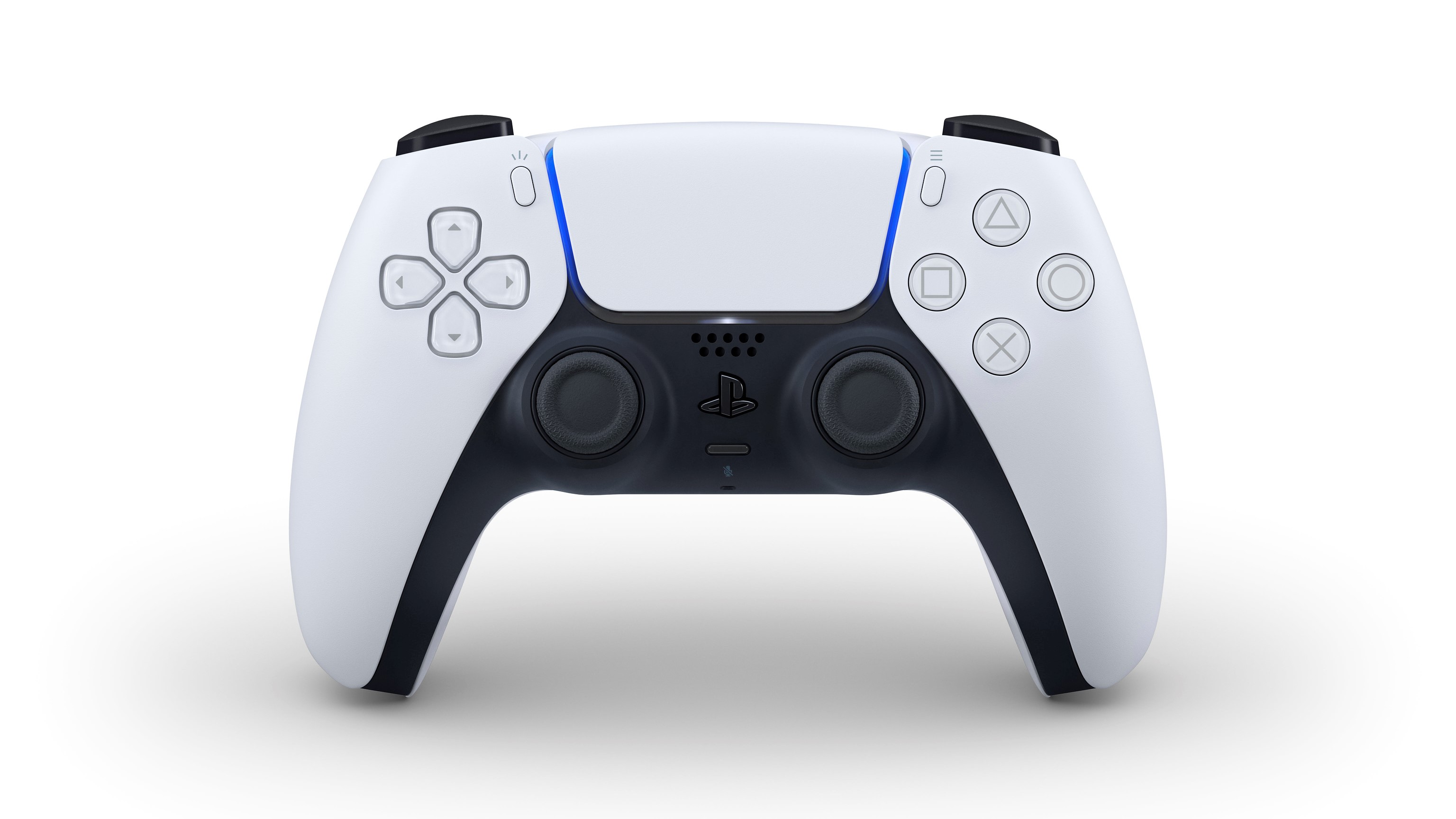
The PS5 will come with a new gamepad, one that Sony is dubbing the DualSense PS5 controller, not the DualShock 5, like you'd expect. Also a departure is the black-and-white color scheme that is bold – and likely to be divisive. That's the confirmed design in the picture above.
The two-tone PS5 controller color scheme extends to the four face buttons, which still consist of Triangle, Circle, Square and Cross (or X), but they're devoid of color. There is a pop of color around the side of the central touchpad, as the PS4 Lightbar has moved from the top of the gamepad on the PS5.
The PS5 controller includes haptic feedback in the L2 and R2 shoulder buttons that are going to be adaptive. Sony explains that these adaptive triggers are important to let players feel the tension of their actions, like drawing a bow to shoot an arrow. This will let developers program the resistance of the triggers to simulate actions more accurately.
The DualSense will include a microphone inside of the controller, allowing gamers to ditch their headset to communicate with friends. And the 'Share' button is dead. Long live the 'Create' button. That's what Sony is calling the the button that's in the same spot and still intended for gameplay content to share with the world. Sony is teasing more details about this button ahead of the console launch.
- PS5 DualSense controller vs Xbox Series X controller: which gamepad will be best?
- The biggest PS5 design clues we've spotted in the DualSense controller
- The PS5 controller is packed with fancy features - but they won’t get used
- DualSense PS5 controller: release date, design and confirmed features

We will finally get our first look at Sony's "compelling" PS5 games line-up on June 4, with announcements expected from both first and third-party developers. But what do we know about PS5 games so far?
Well, for a start, we know that an "overwhelming majority" of the more than 4,000 PS4 games available will also be playable on the PS5, including PSVR games, through backwards compatibility. While "almost all" of the top 100 PS4 games will be playable on the PS5 at launch, this backwards compatibility library may be extended through regular system updates.
Not only will we see backwards compatibility with PS4 games, but expect any first-party PS4 game in the pipeline – from Ghost of Tsushima to The Last of Us 2 - to be cross-gen titles. In addition, any new first-party PS4 games submitted to Sony for certification after July 13 have to be PS5 compatible - essentially making them forwards-compatible titles. We've also heard enough chatter around a Horizon Zero Dawn sequel and new God of War game to assume we'll be seeing both land on the PS5 console.
But what about third-party titles? We've had confirmation that Gearbox's new IP Godfall is coming exclusively to PS5, as is a title from Bluepoint Studios that's rumored to be a Demon's Souls remake. We will also see a remake of THQ Nordic's cult classic Gothic, Gollum, WRC 9, Battlefield 6, Dying Light 2 and Outriders land on PS5. In addition, Ubisoft has confirmed that Watch Dogs: Legion, Rainbow Six Quarantine, Gods and Monsters and Assassin's Creed Valhalla are all coming to Xbox Series X and PlayStation 5 - with a new Far Cry also rumored to be coming to the platforms. We also know Rainbow Six Siege will be available on PS5 and Xbox Series X from launch. However, Ubisoft has said that it could delay these games if the next-gen consoles don't make their launch window.
It's likely that we'll see the likes of Starfield and The Elder Scrolls 6 coming to PS5 and Xbox Series X, too.
While this is a good start, we're expecting plenty more third-party games to be announced on June 4 - as well as confirmation on some of the PS5's first-party games and launch titles.

But if you're holding out hope that any of Sony's PS5 exclusives that are revealed during the showcase will come to the PS4 too, you might be disappointed.
In an interview with GamesIndustry.biz, Sony Interactive Entertainment's president and CEO Jim Ryan seemed to shoot down the possibility of PS5-exclusives games coming to PS4 in the future.
"We have always said that we believe in generations," Ryan said. "We believe that when you go to all the trouble of creating a next-gen console, that it should include features and benefits that the previous generation does not include. And that, in our view, people should make games that can make the most of those features.
"We do believe in generations, and whether it's the DualSense controller, whether it's the 3D audio, whether it's the multiple ways that the SSD can be used... we are thinking that it is time to give the PlayStation community something new, something different, that can really only be enjoyed on PS5."
Sony has also confirmed that the PS5 will prioritize AAA games over indie games in an effort to focus on "serious gamers".
We've also seen a little of what the PS5 is capable of in Epic's Unreal Engine 5 reveal. This tech demo is running on PS5:
- PS5 games: all the games confirmed and expected on the PlayStation 5
- What Sony's history of backward compatibility tells us about PS5
- Xbox Game Pass vs PS Now: which is the best game subscription service?

Rumors have cropped up suggesting that Sony will double down by launching the PlayStation 5 Pro at the same time as its base-model PS5.
Spotted by Wccftech, noted Japanese games journalist Zenji Nishikawa made the claim in a video on his YouTube channel, and while that kind of thing wouldn't normally be considered a rock-solid lead, Nishikawa has been proven correct in the past with his predictions about the PS4 Pro and Switch Lite.
According to Nishikawa, the PS5 Pro will cost around $100-$150 more than the basic PS5 console. The report states that Sony is taking this approach because it has "acknowledged the interest in a high-end model and wants to give players what they want right from the beginning of the generation".
NeoGaf user FXVeteran (via TweakTown) has since added fuel to the fire by claiming Sony plans to release two PlayStation 5 models at the same time: a PS5 Pro and a PS5, with the PS5 Pro being "top of the line" to compete with the Xbox Series X's potential iteratively more powerful versions.
While a PlayStation 5 Pro is likely on the cards, we don't think it'll release at the same time as the regular PS5. In our opinion, it's more likely that Sony will wait around three years (2023) before giving the console an upgrade - usually this happens mid-cycle and the PS5 lifecycle is estimated to be around six to seven years.
- Tired of future-gazing? Why not check out the best PS4 games right now
- Already got a PSVR? These are the best PSVR games right now
- These are the best PS4 gaming headsets around
from TechRadar: computing components news https://ift.tt/2x8CWcw
via IFTTT

